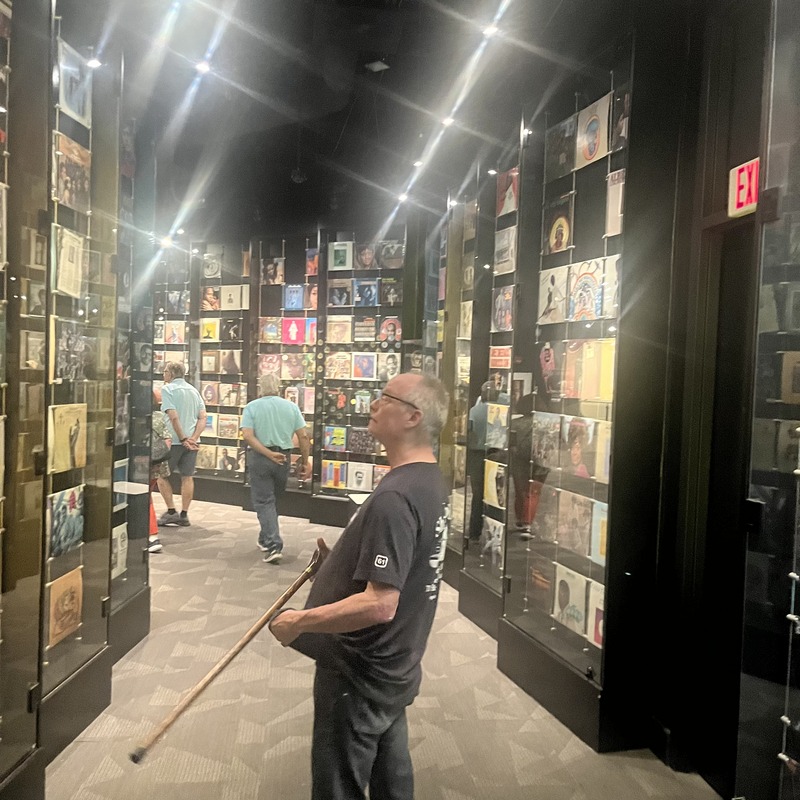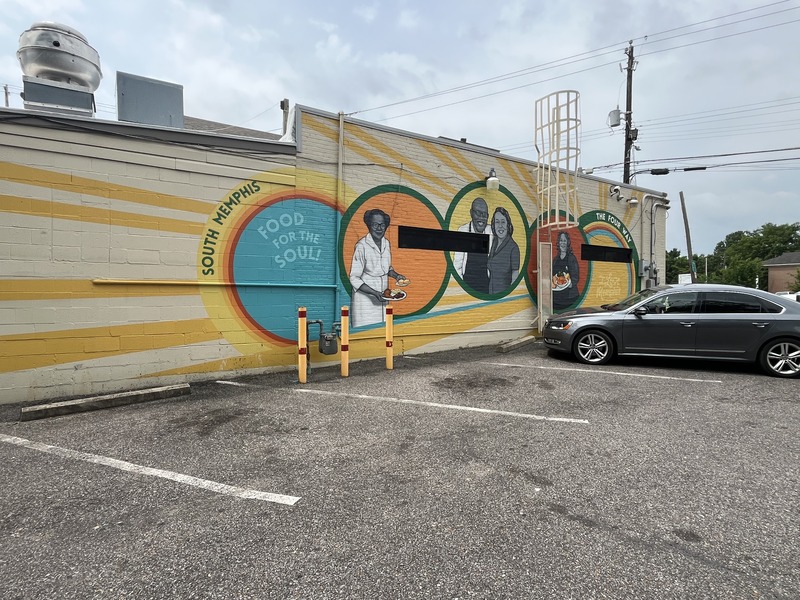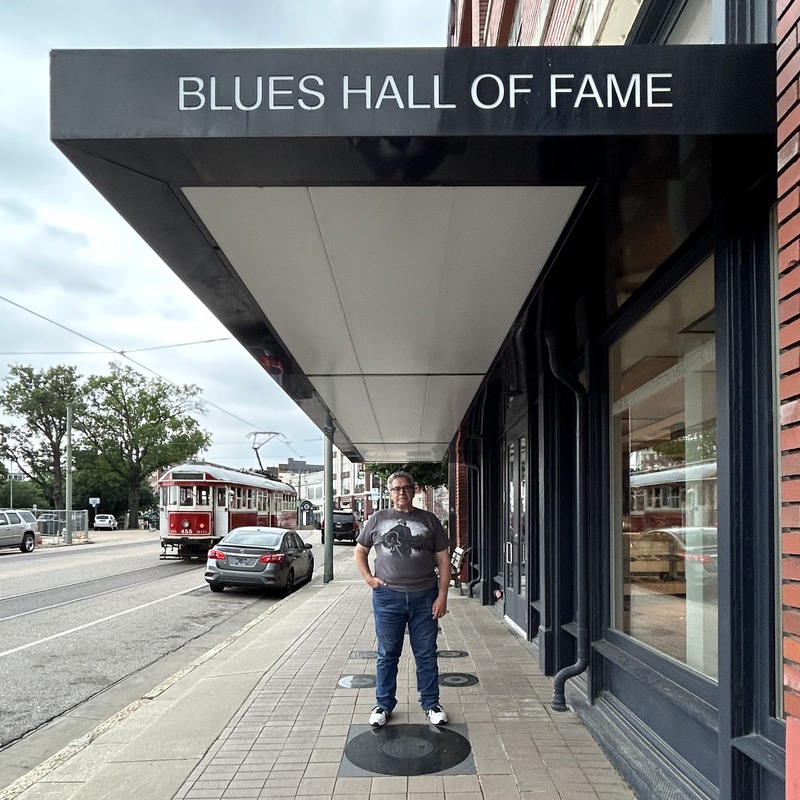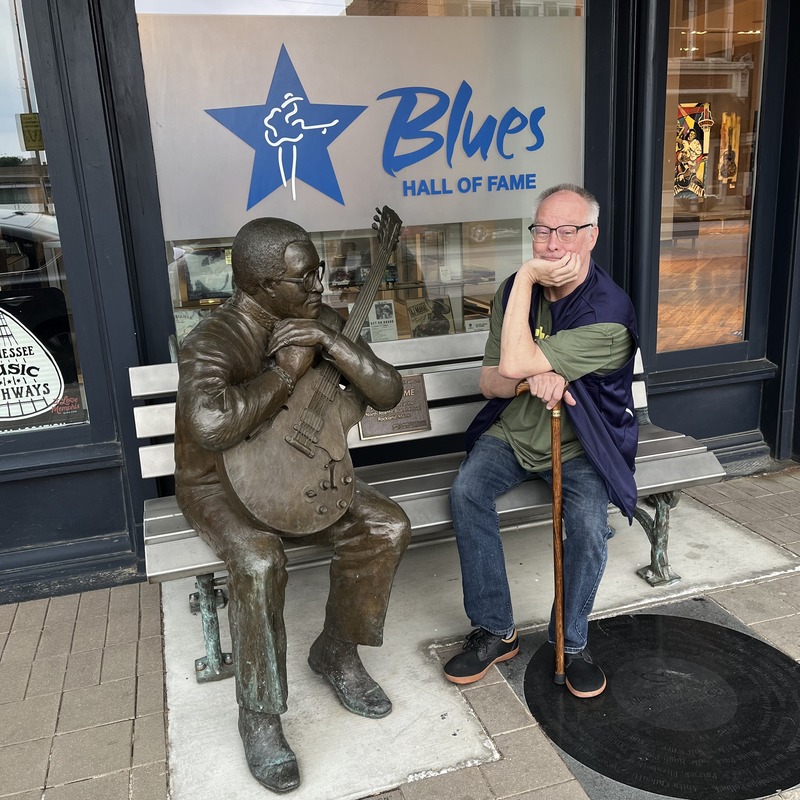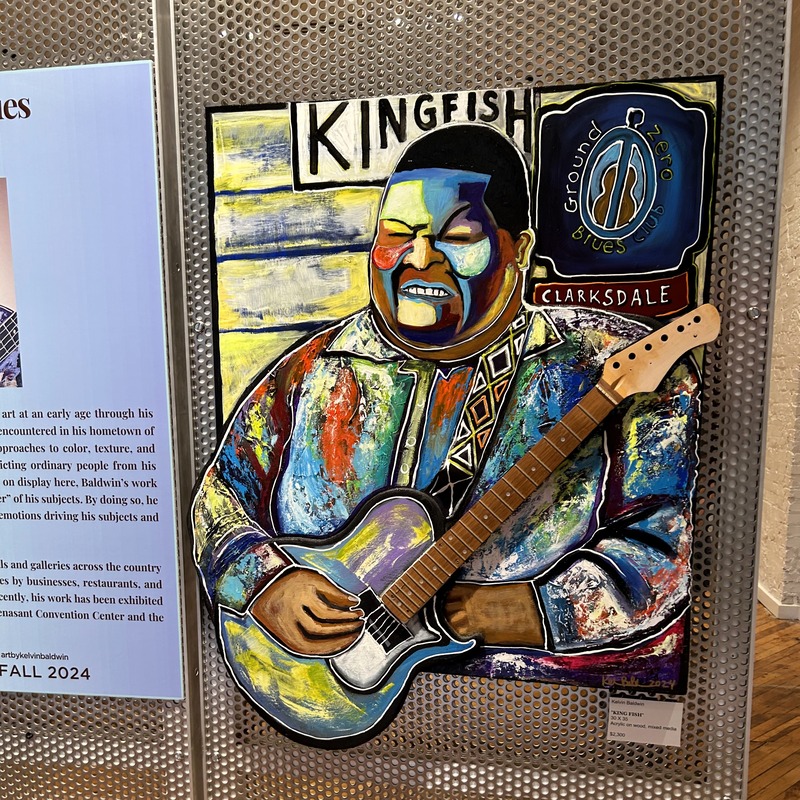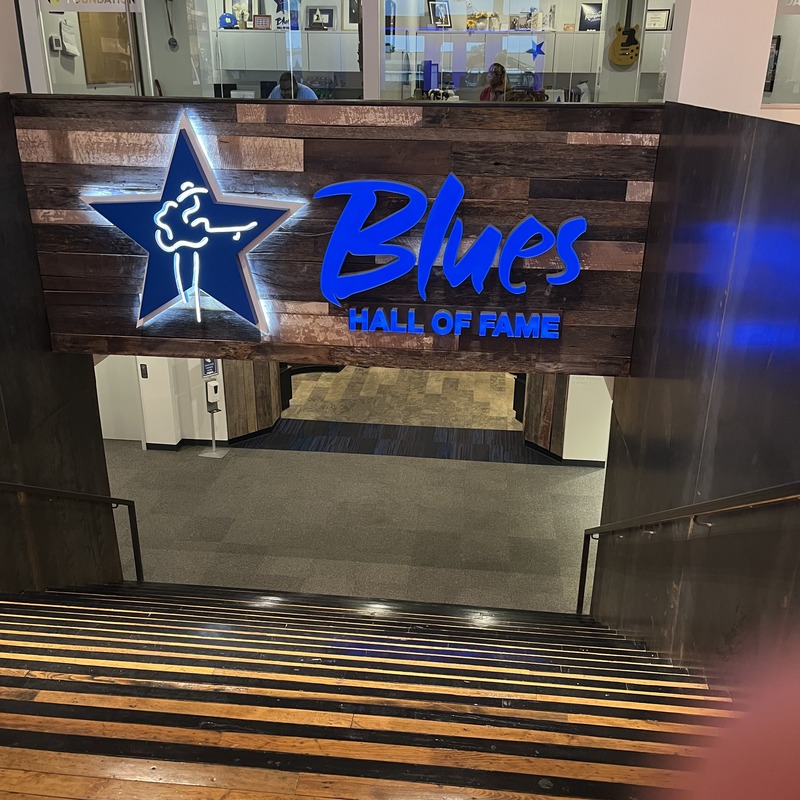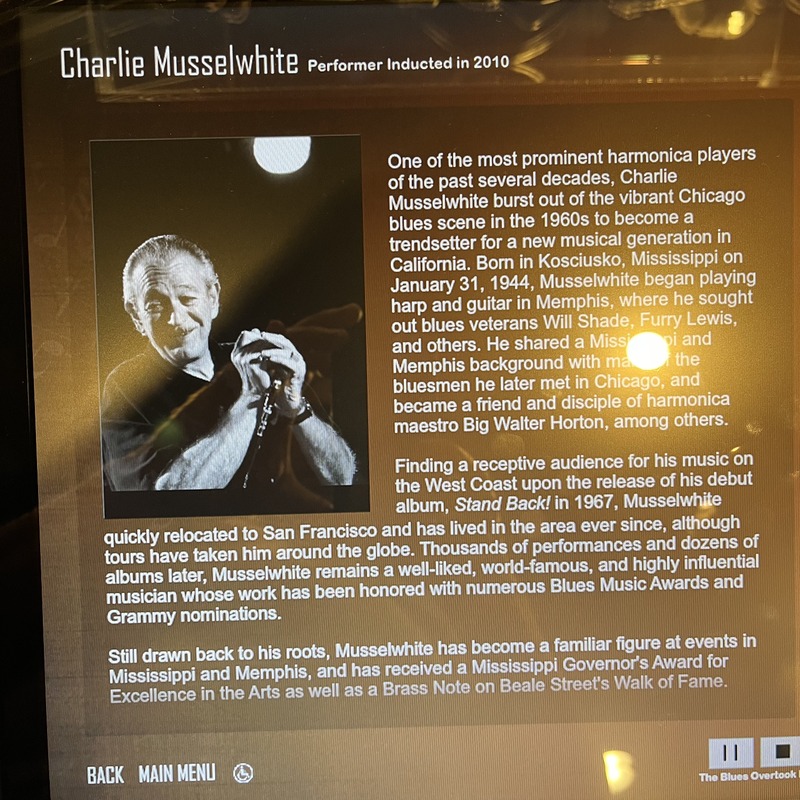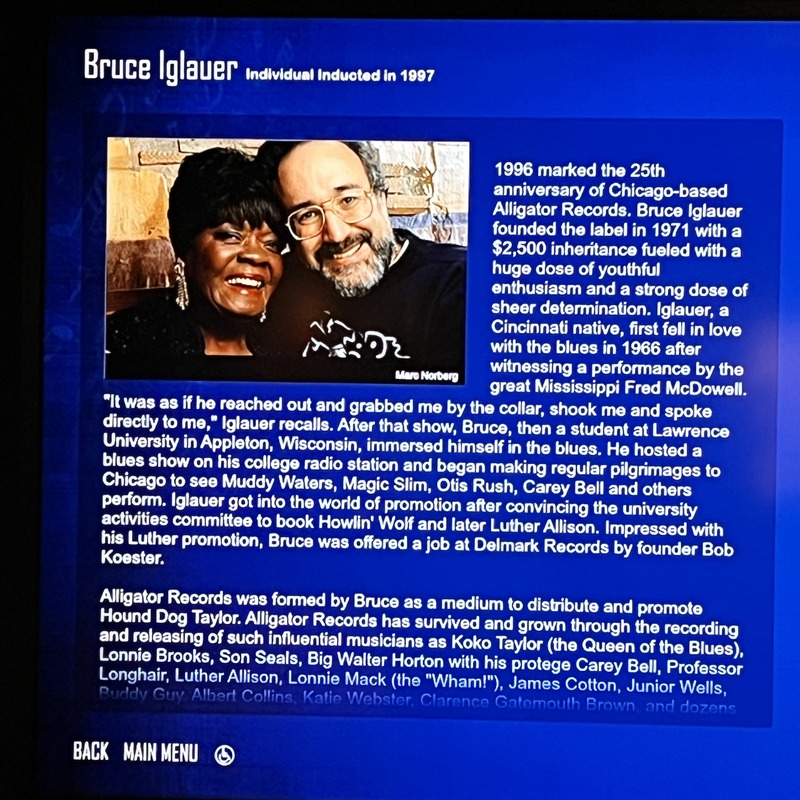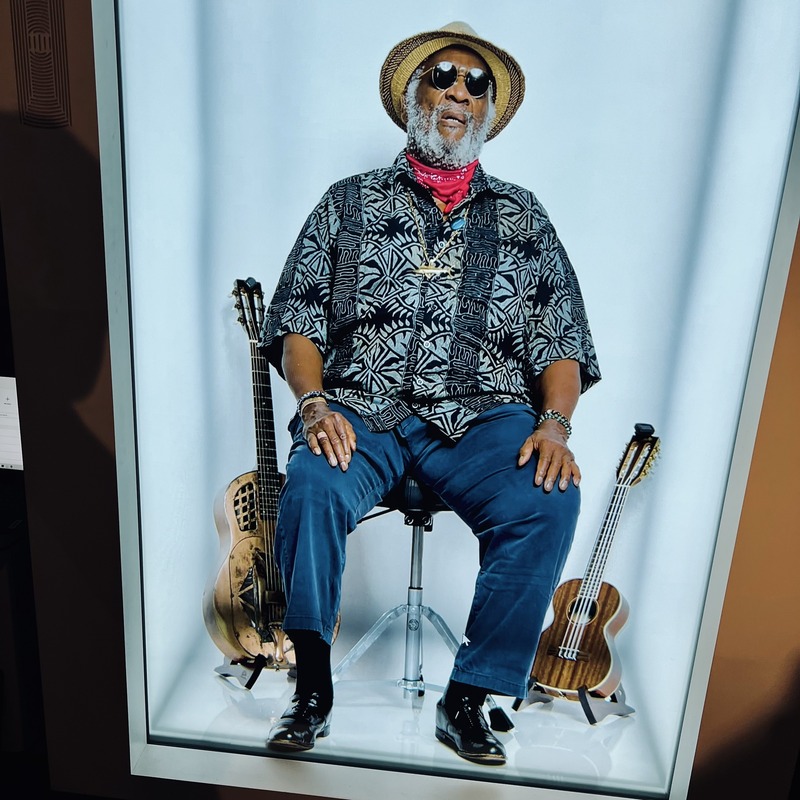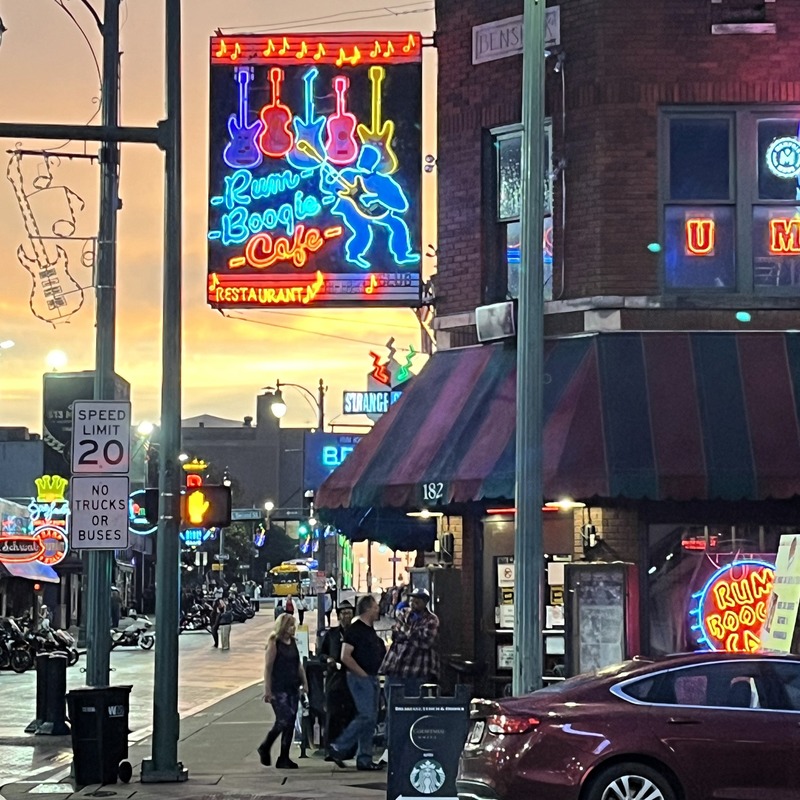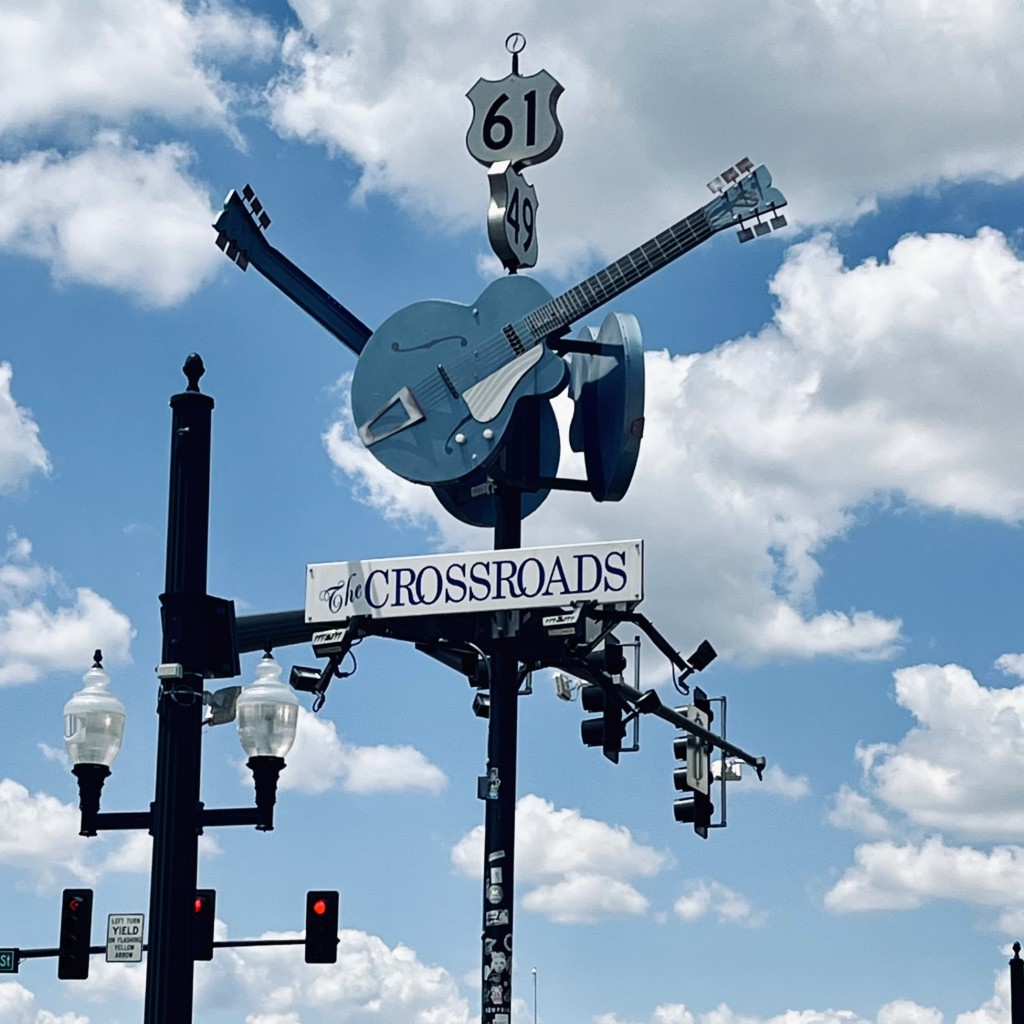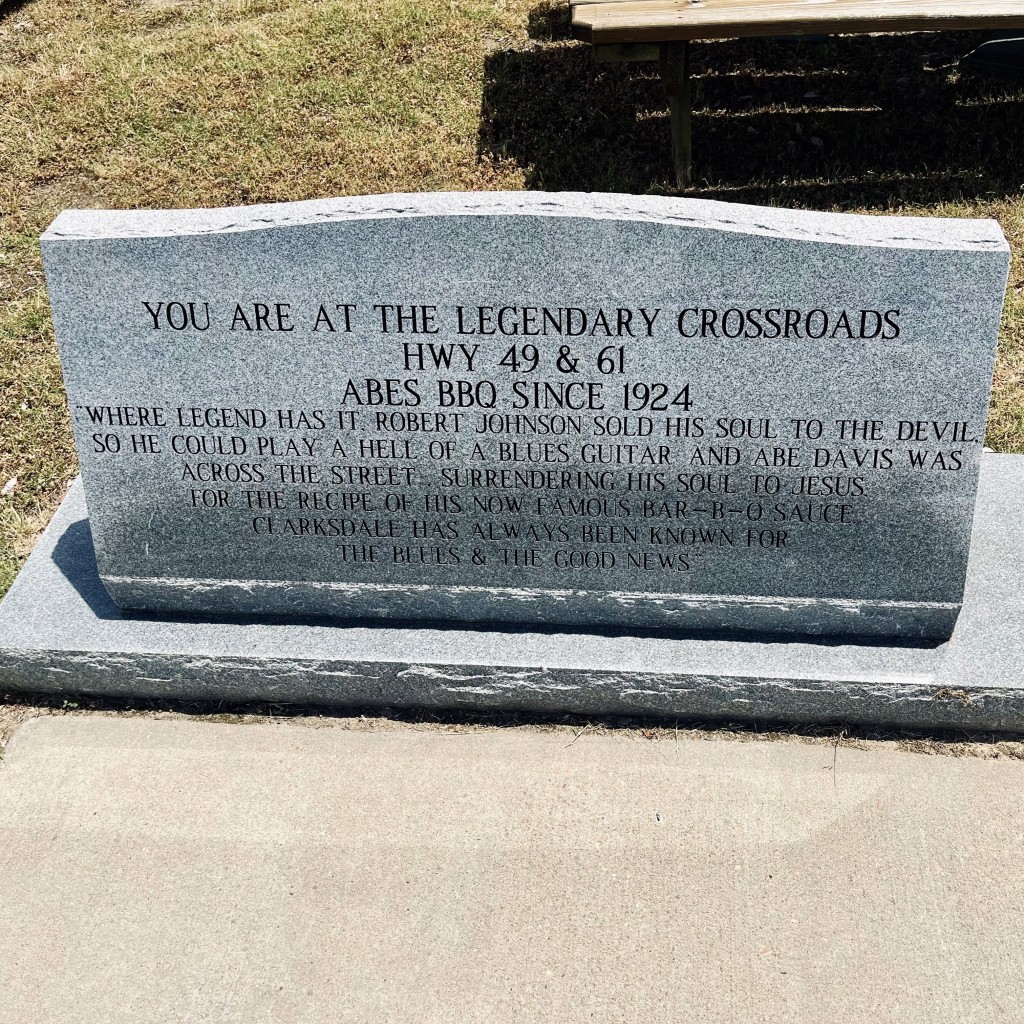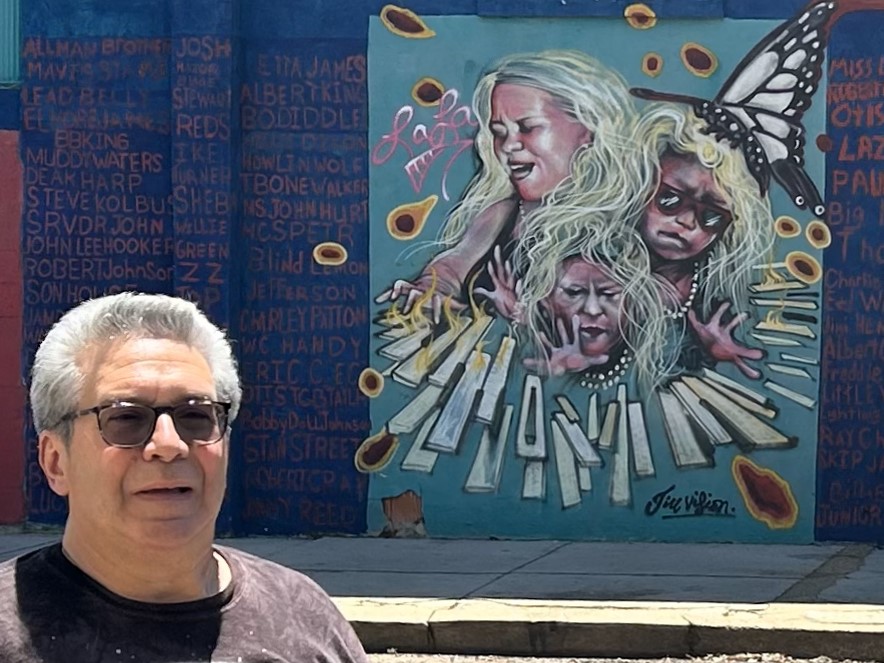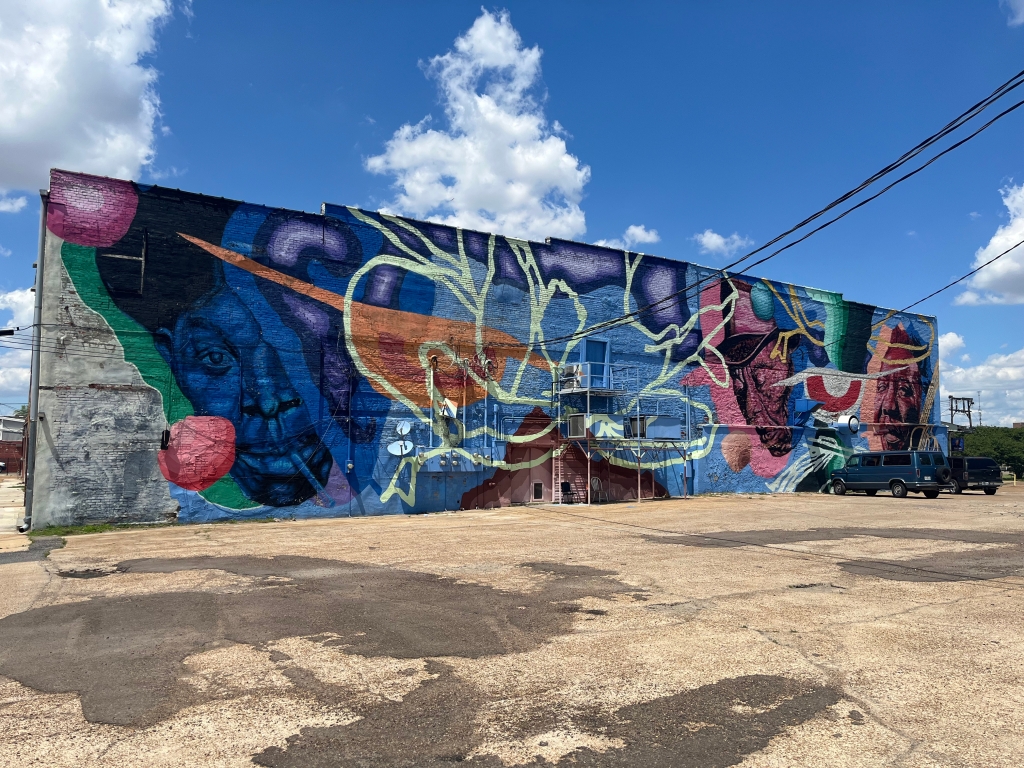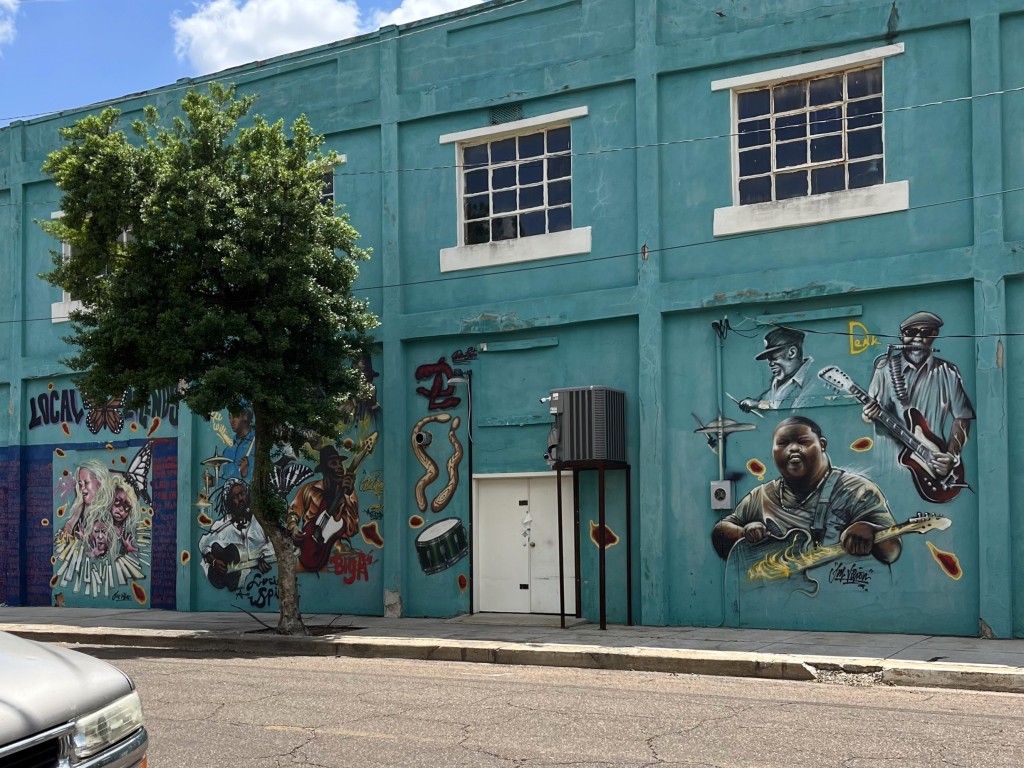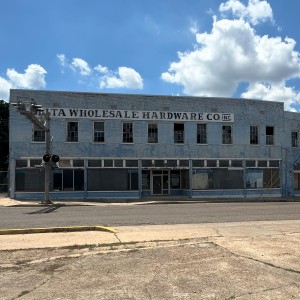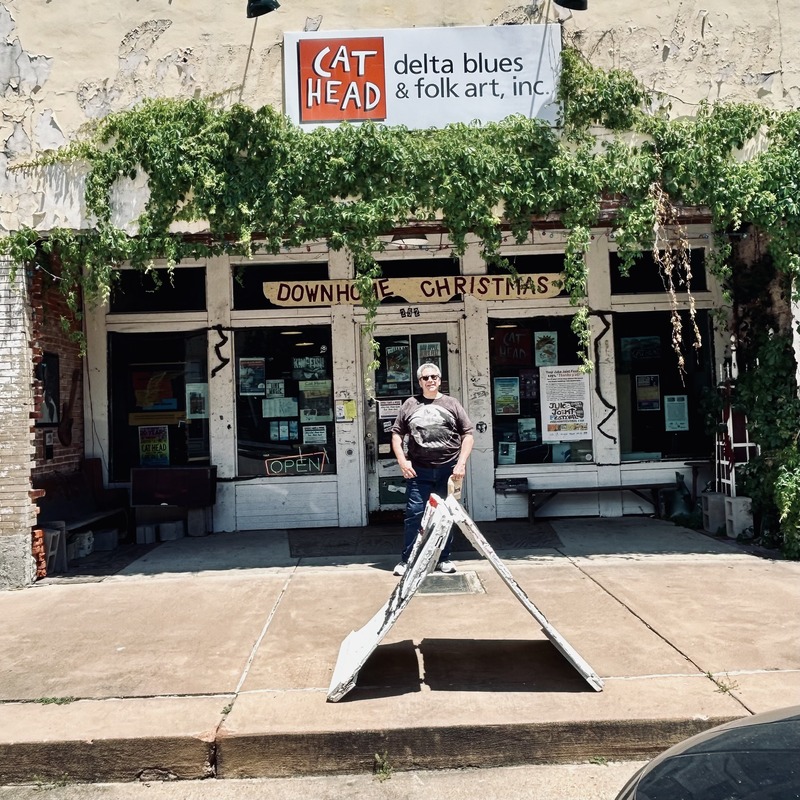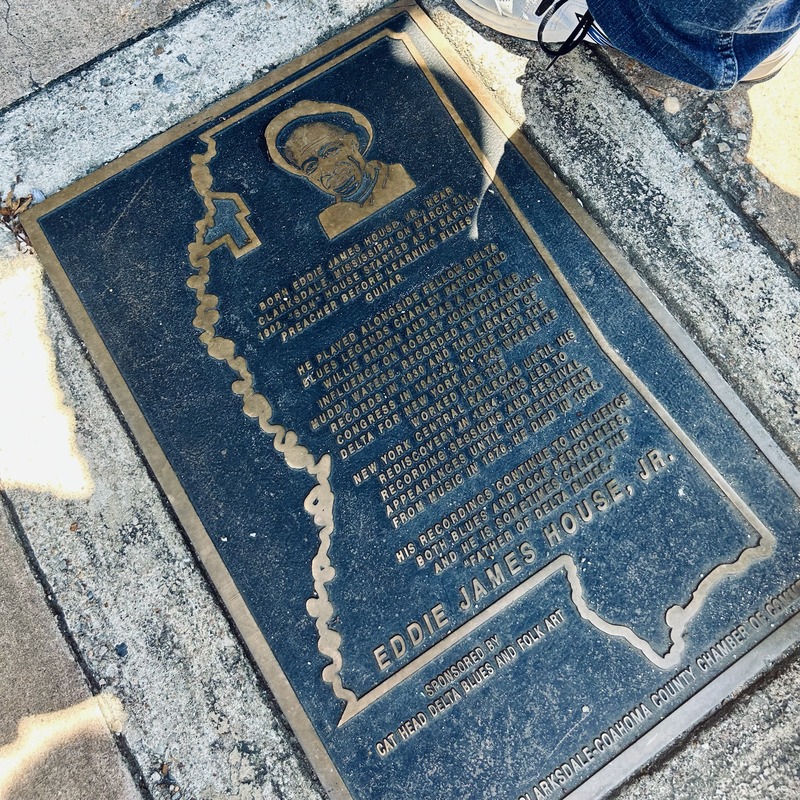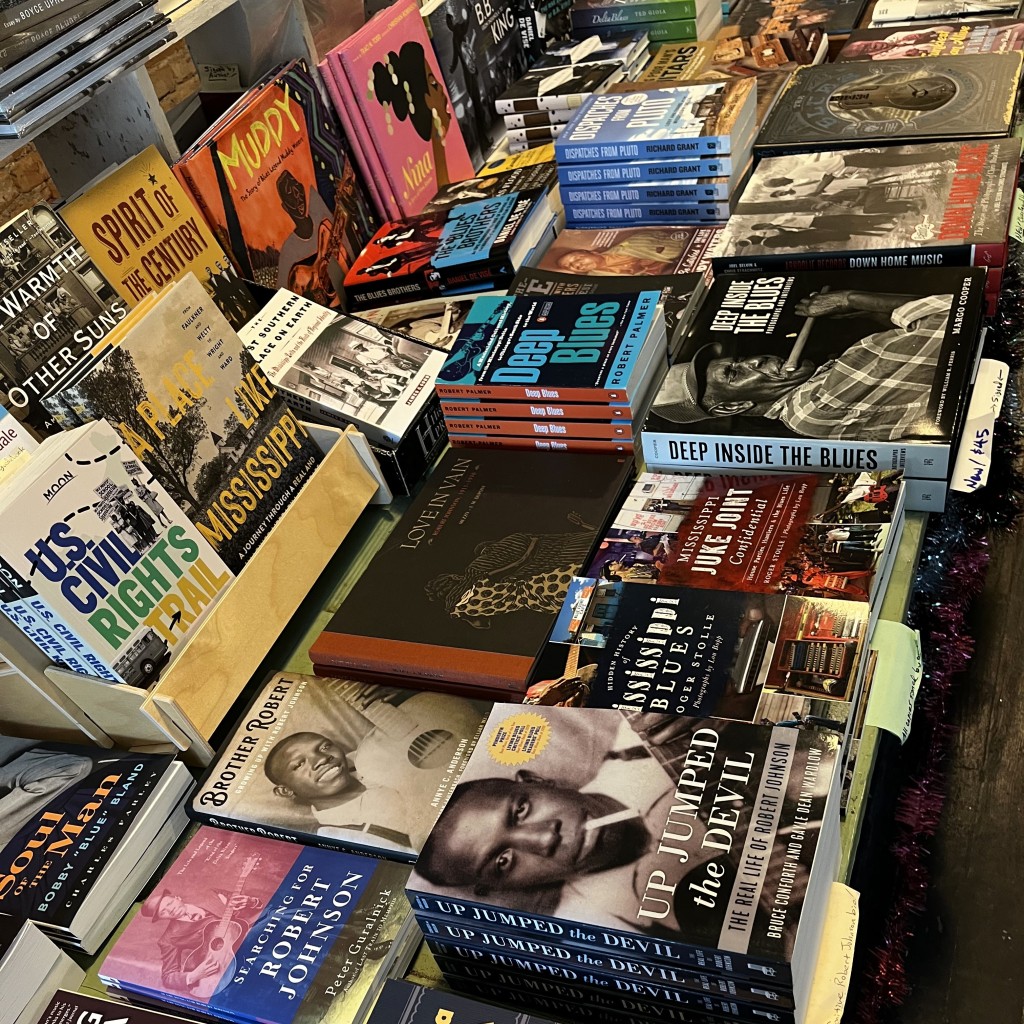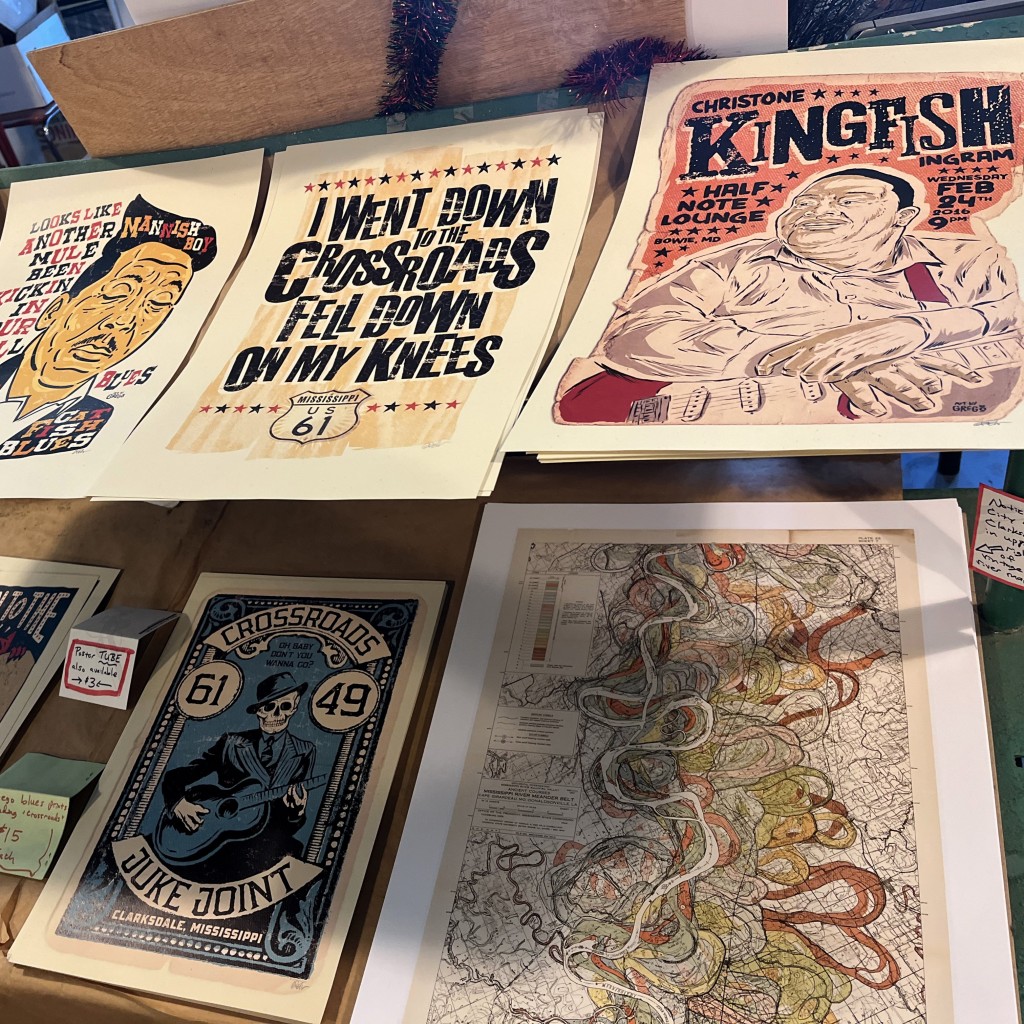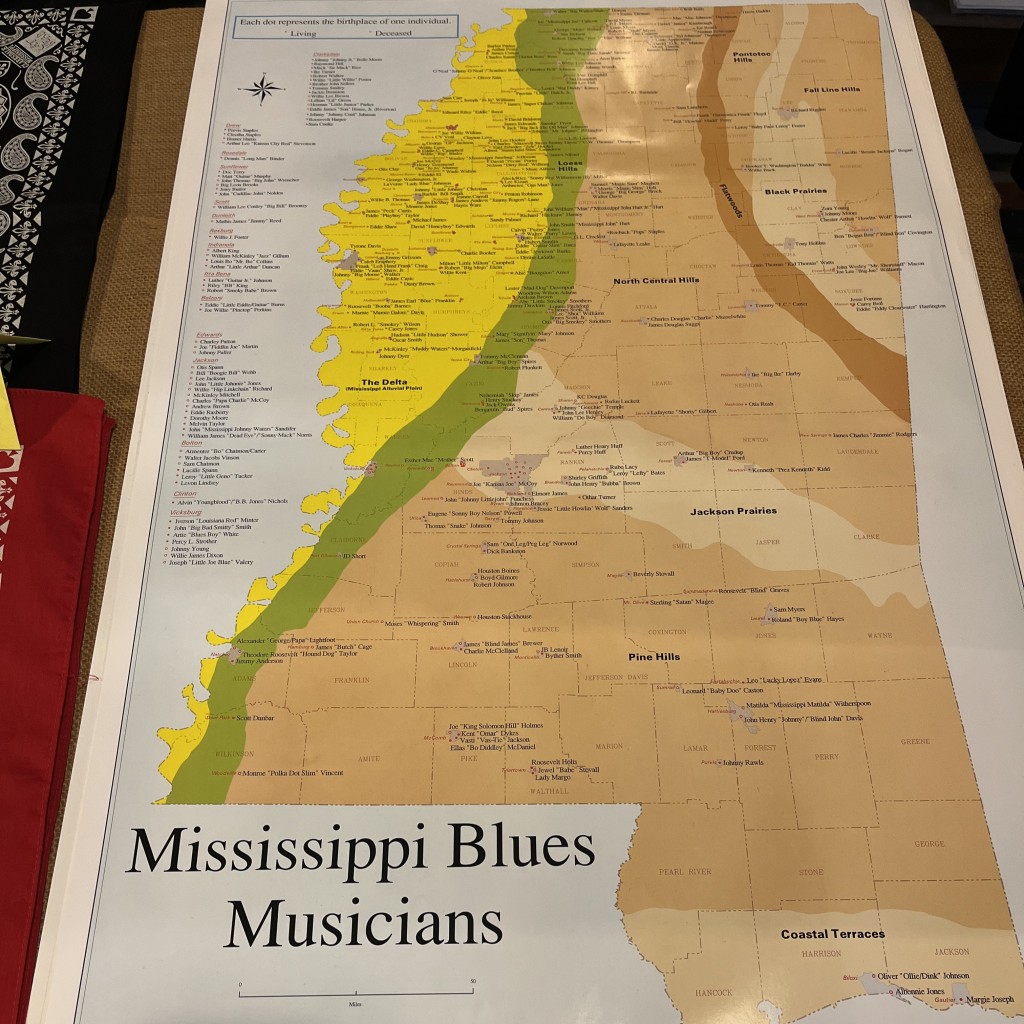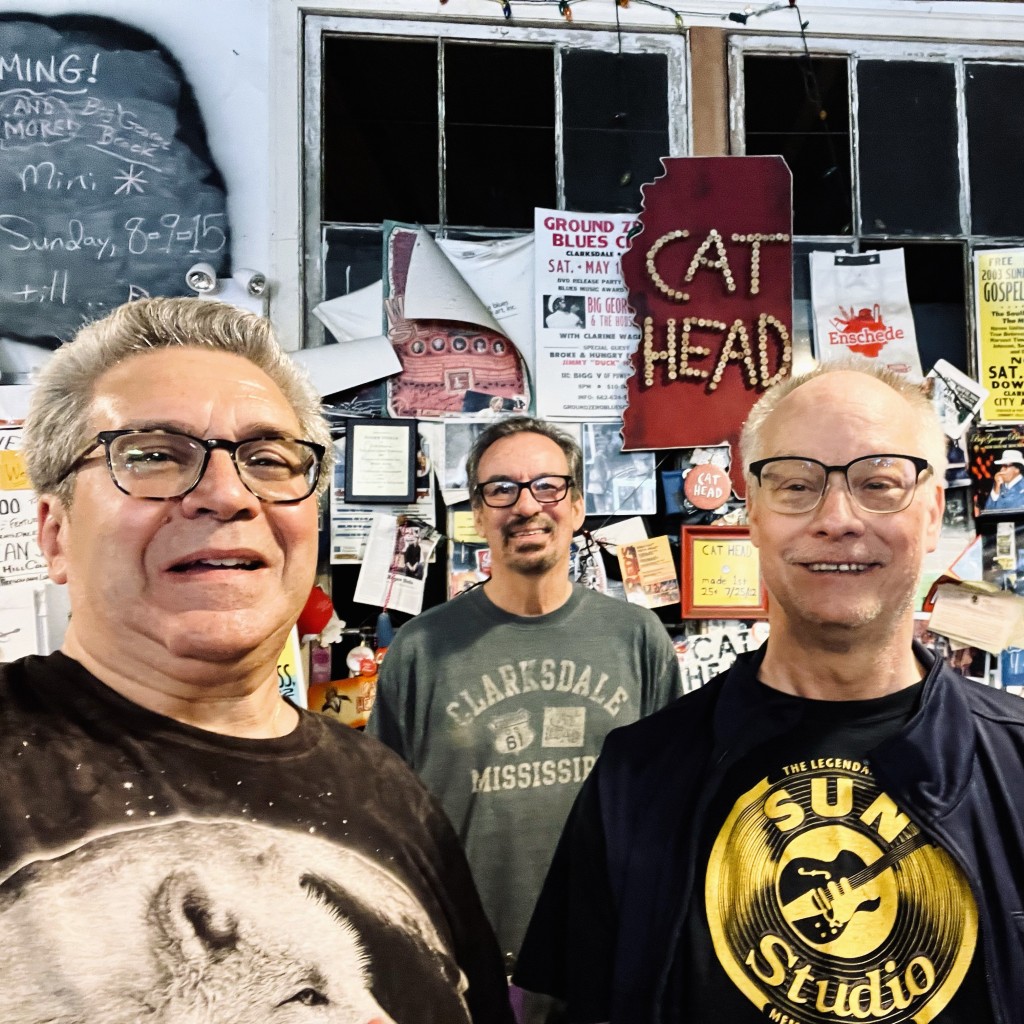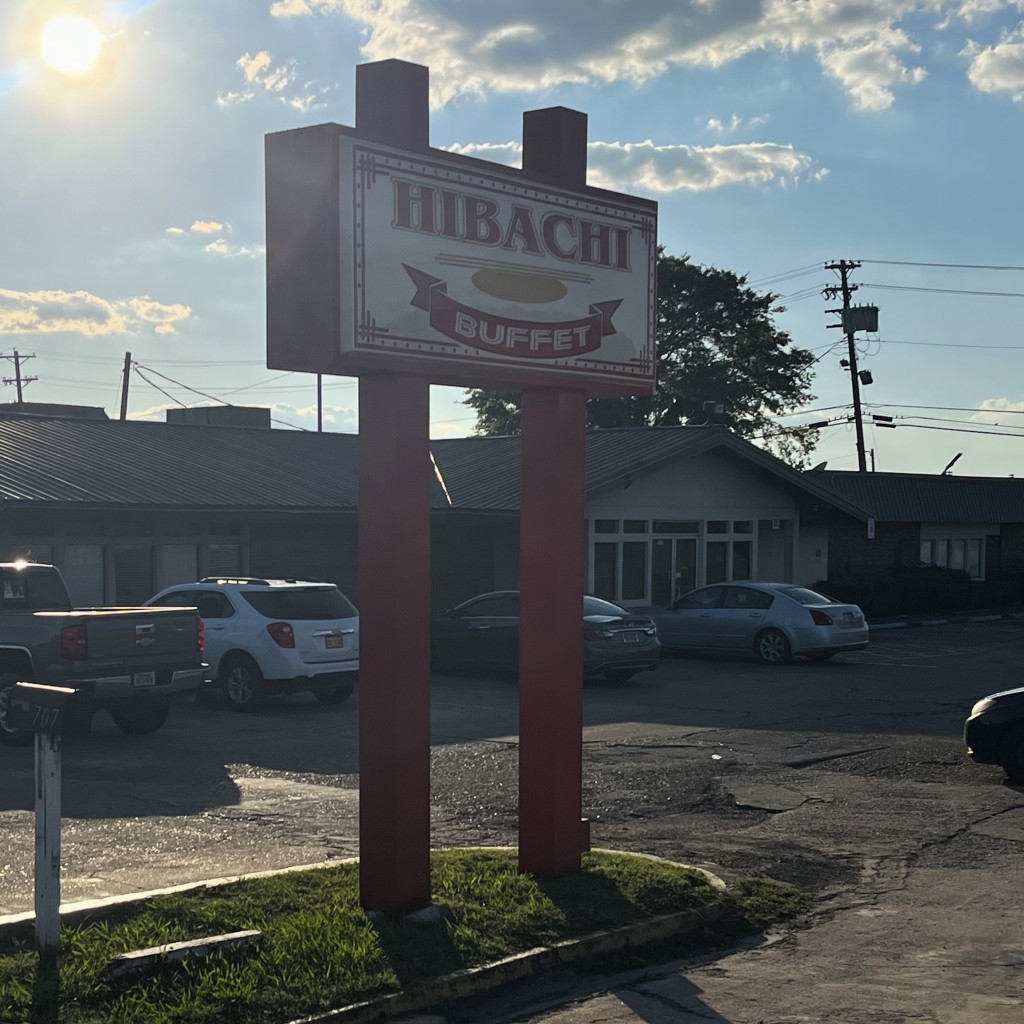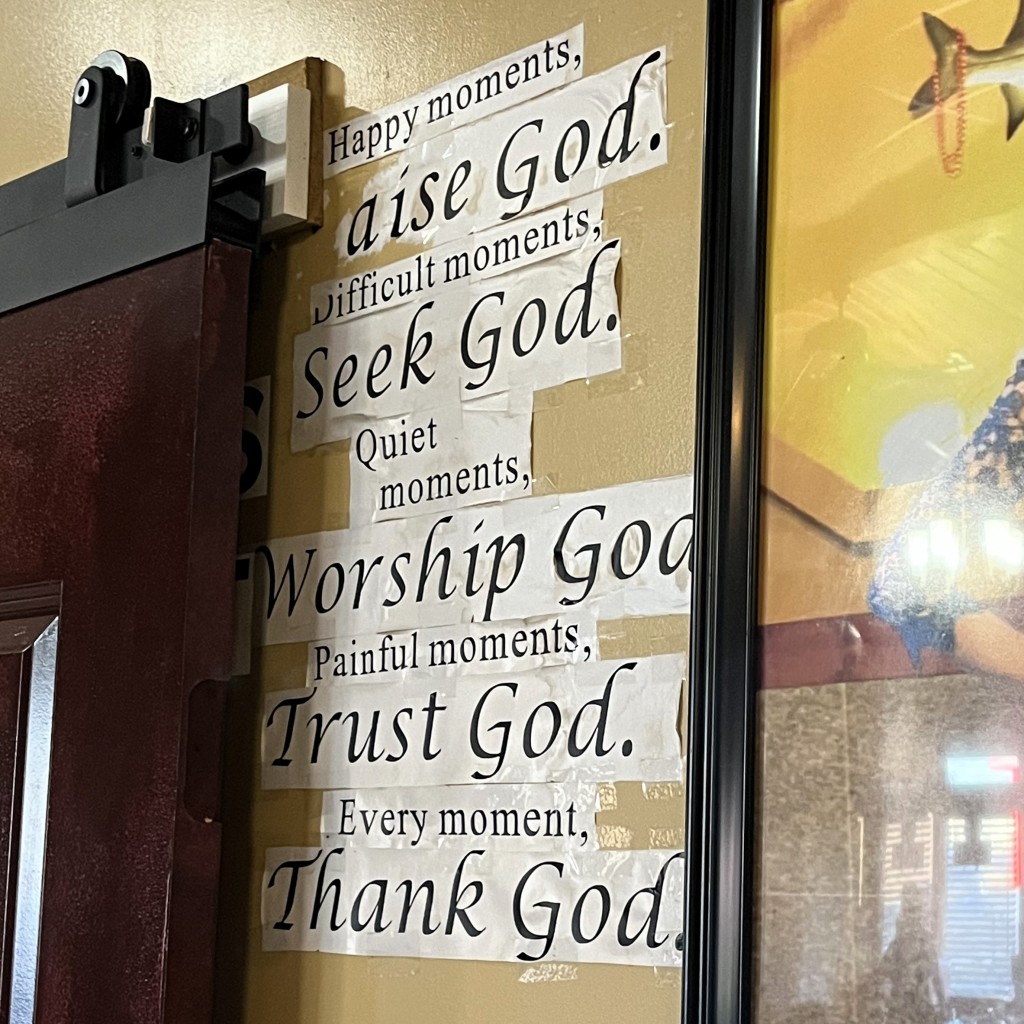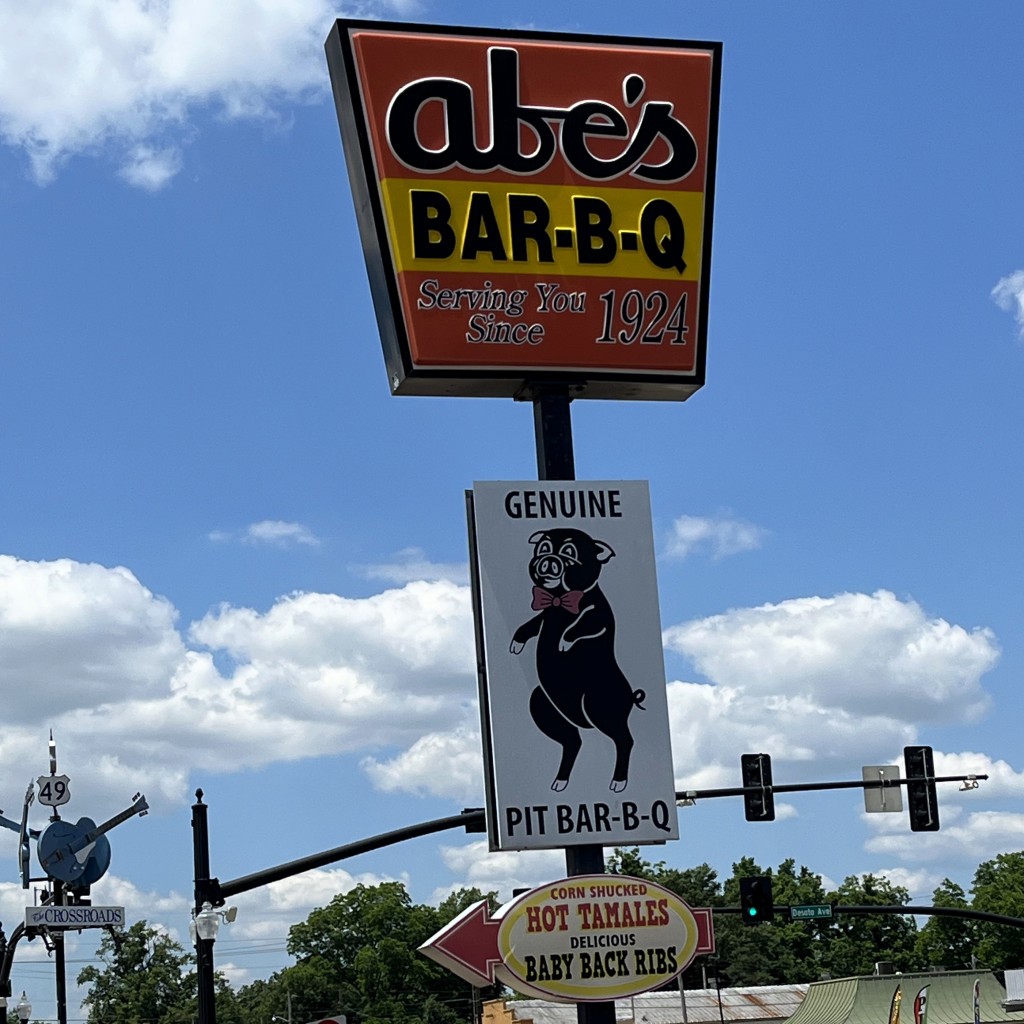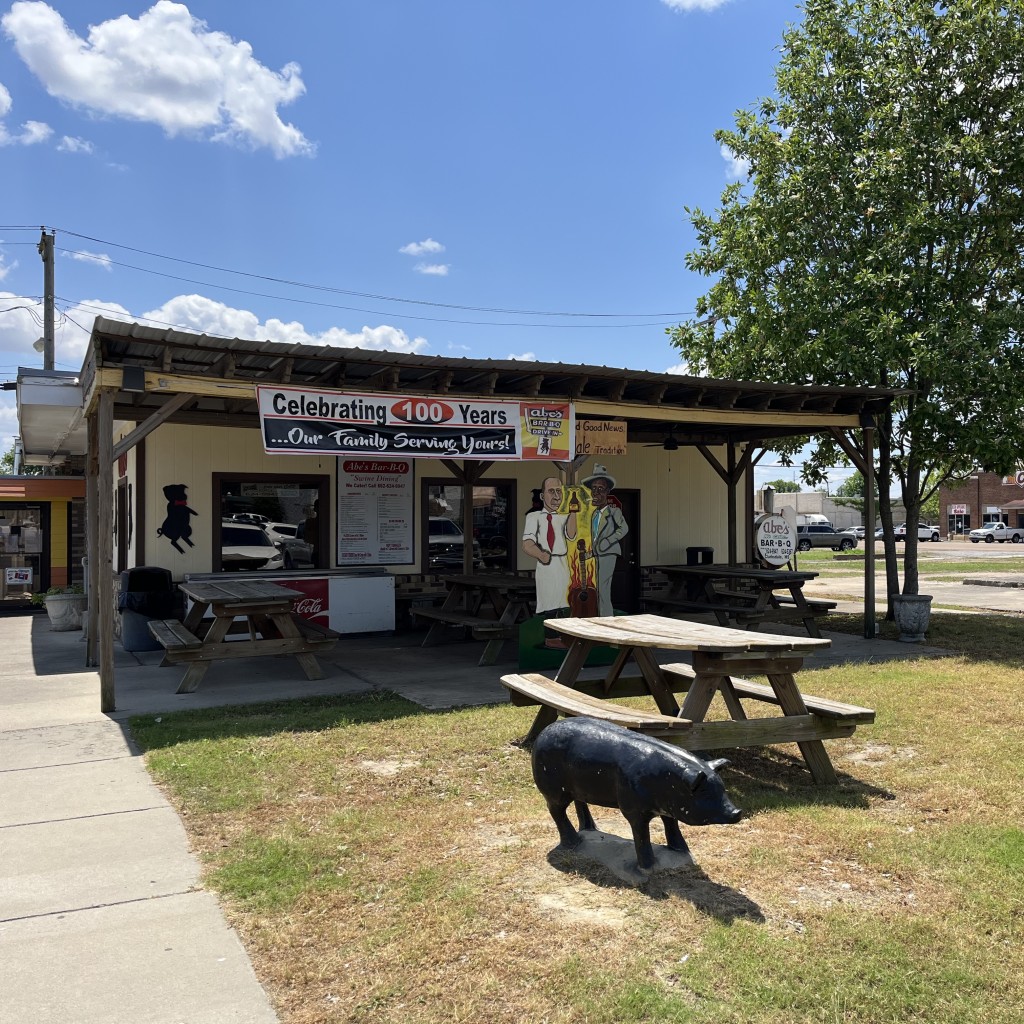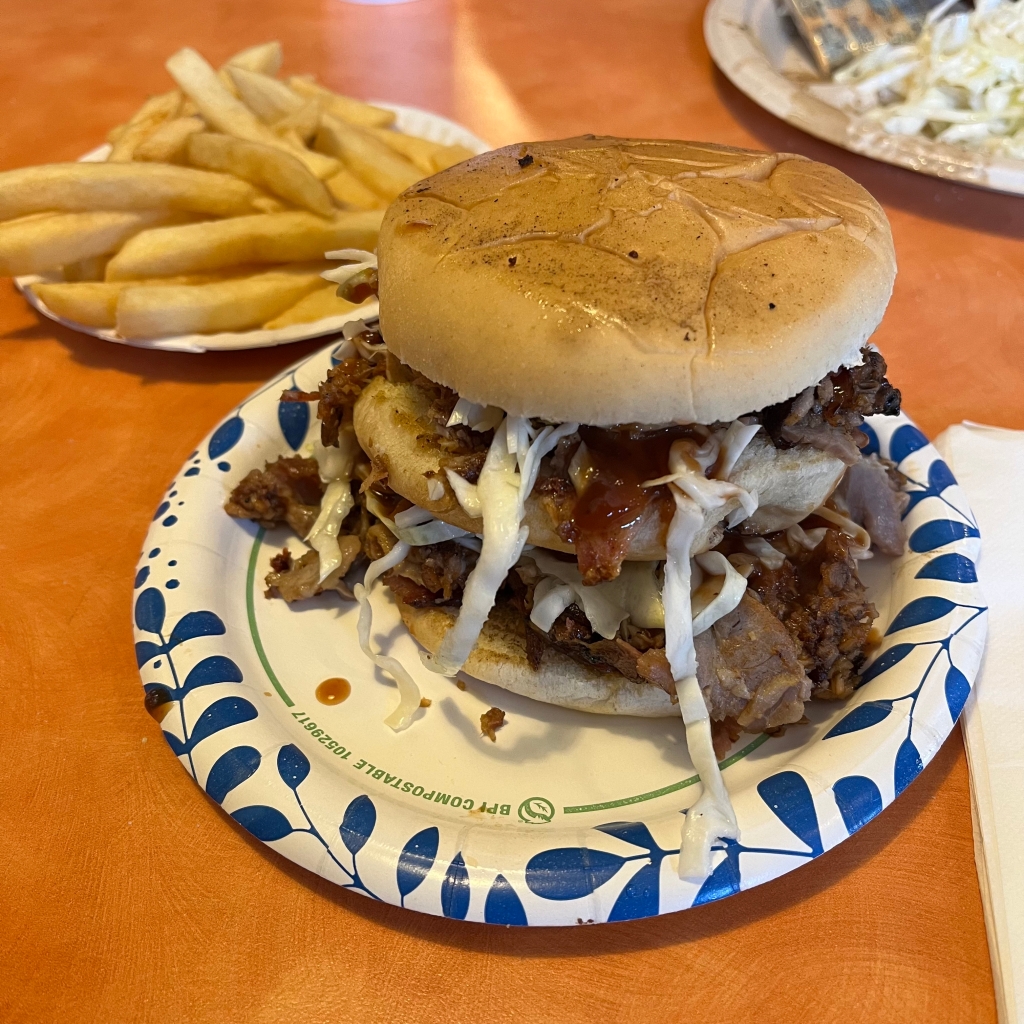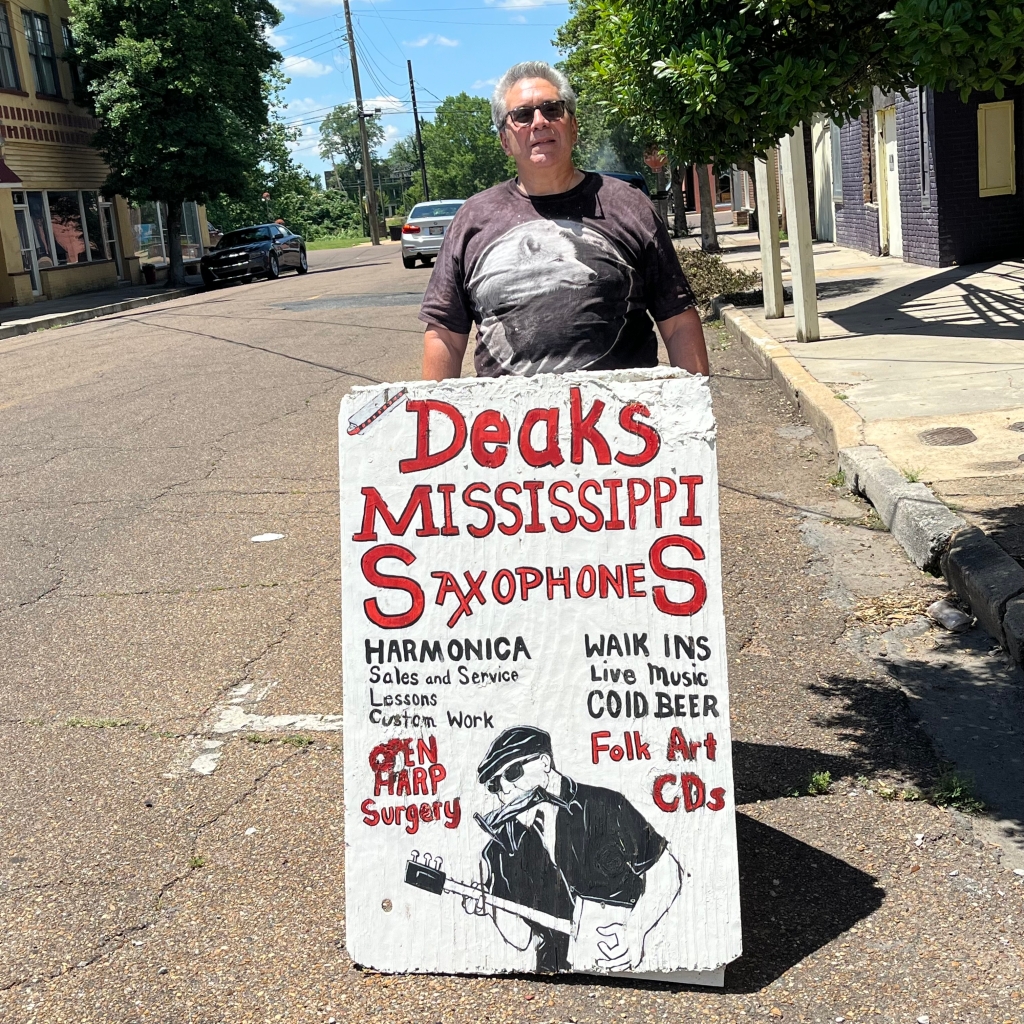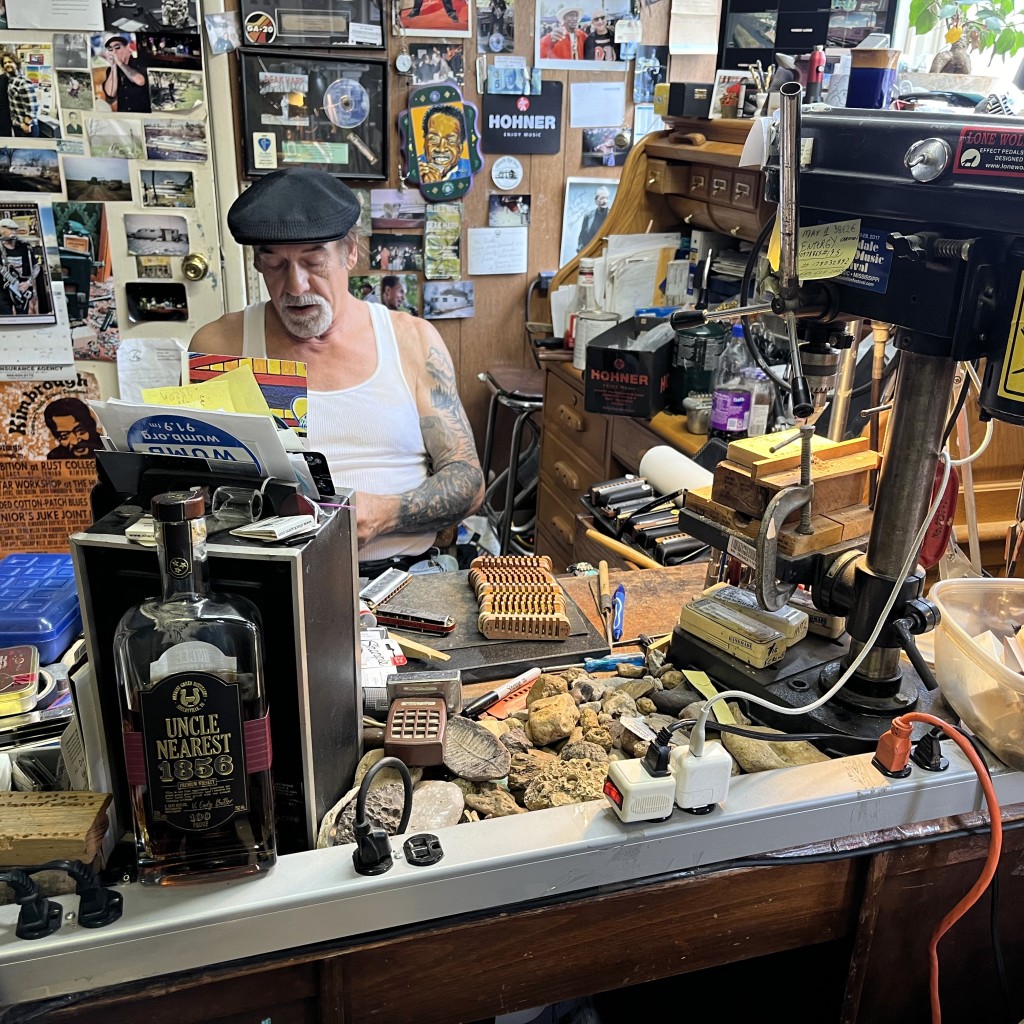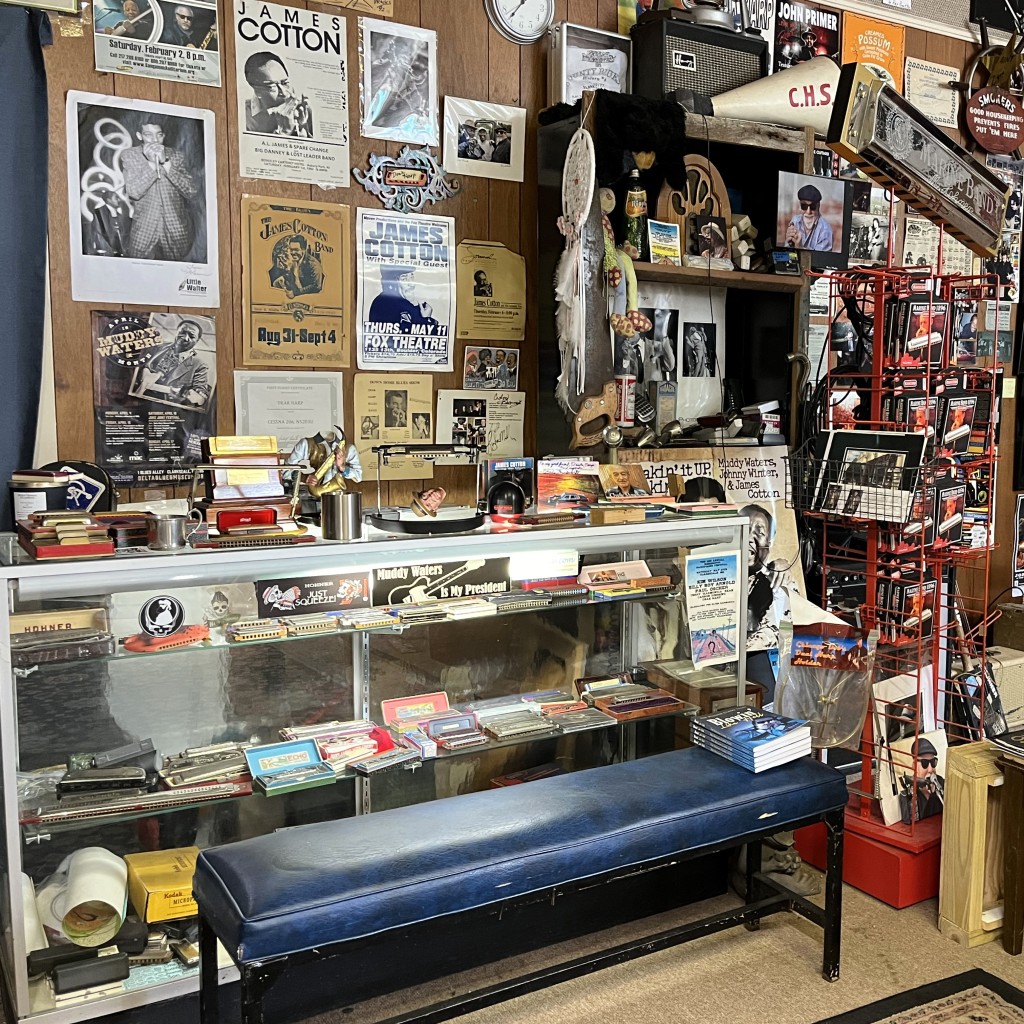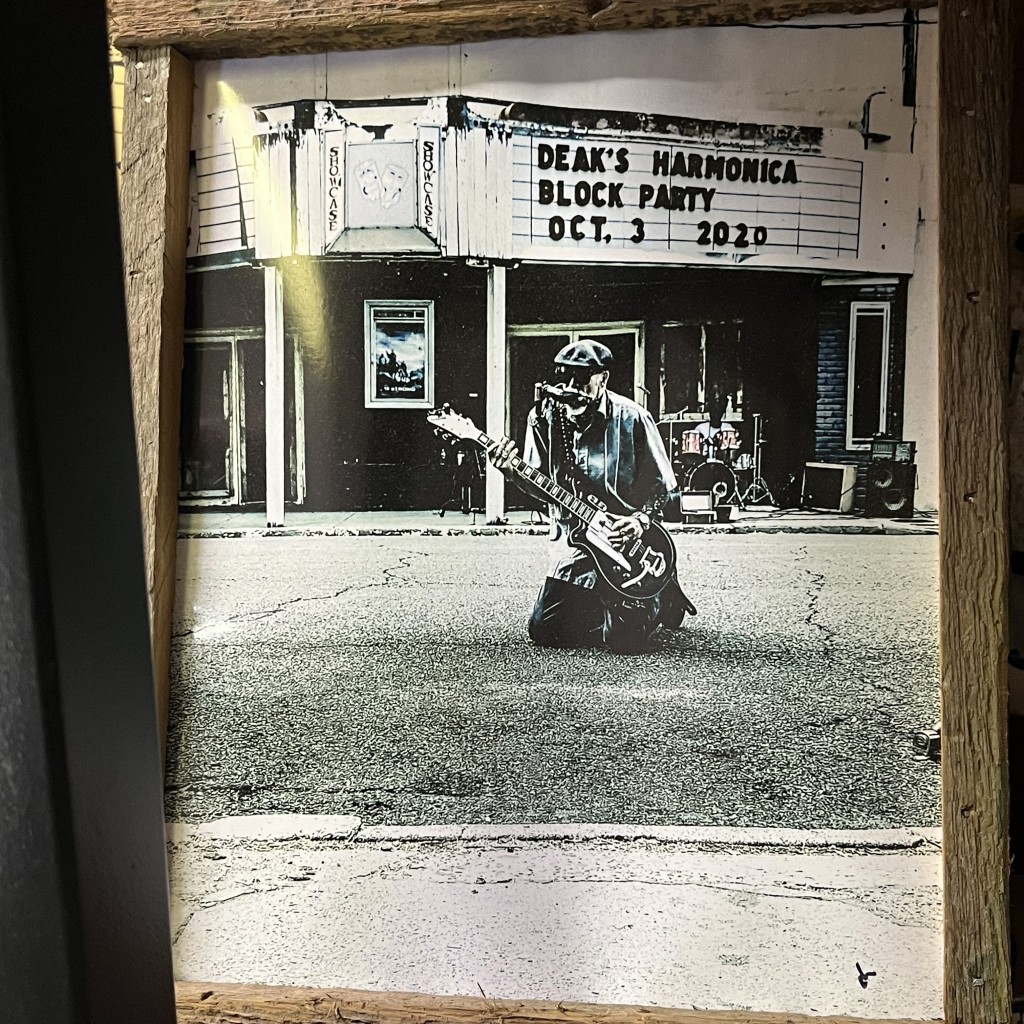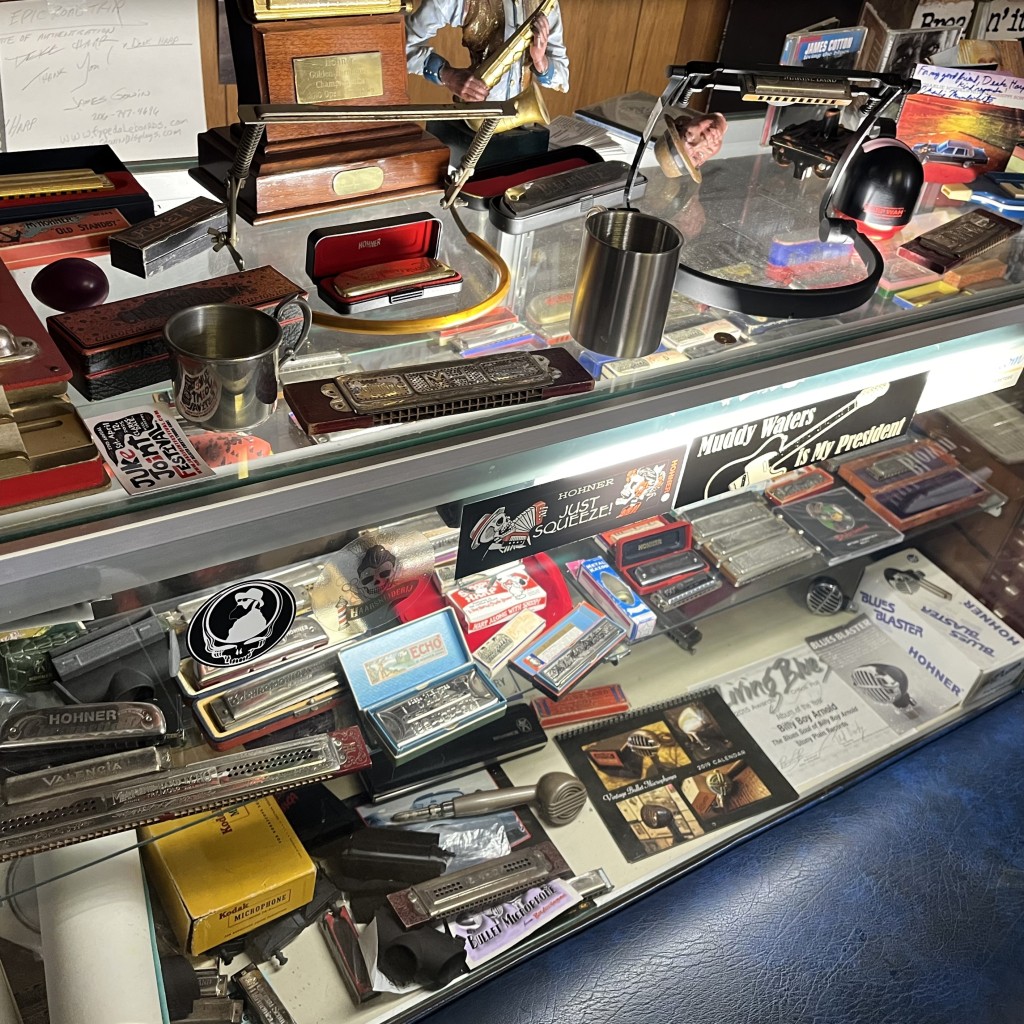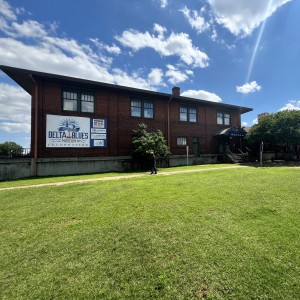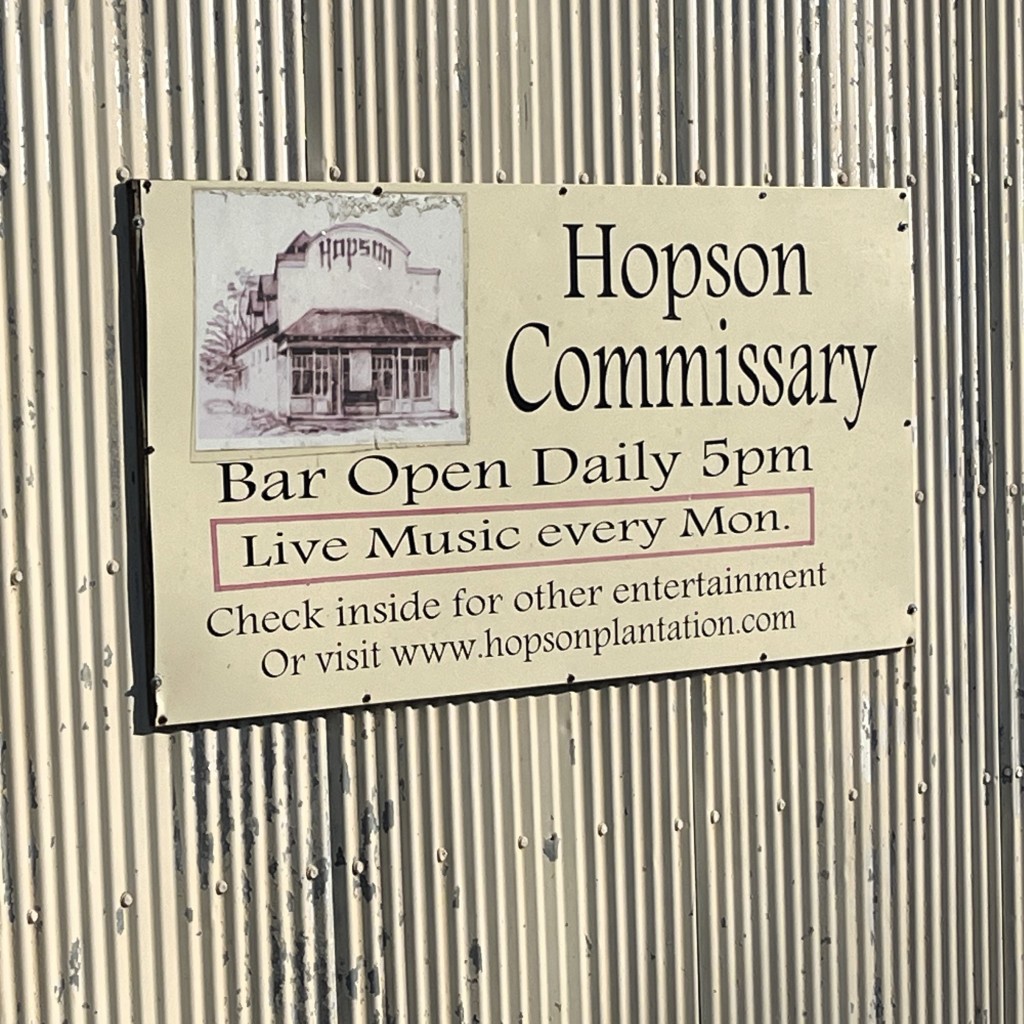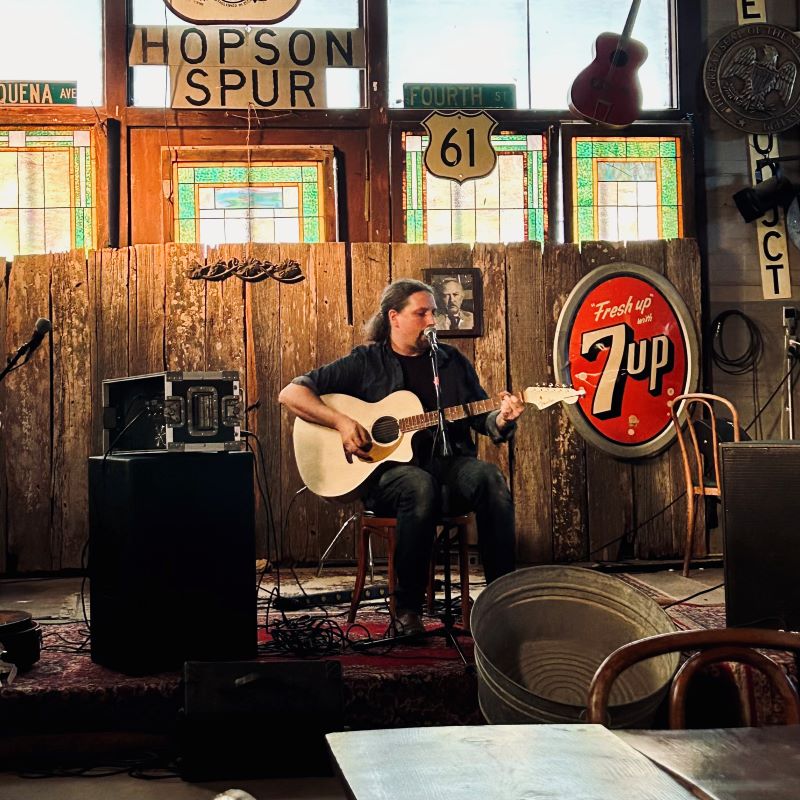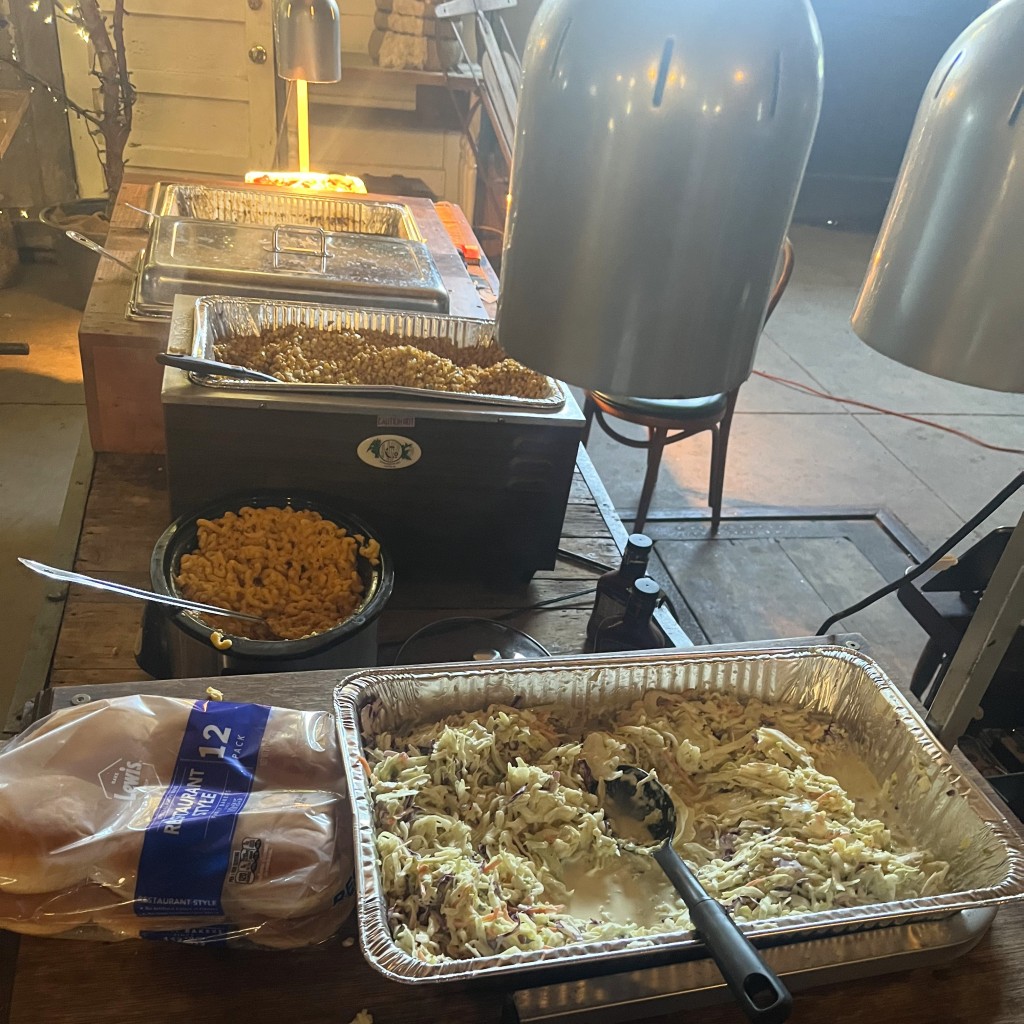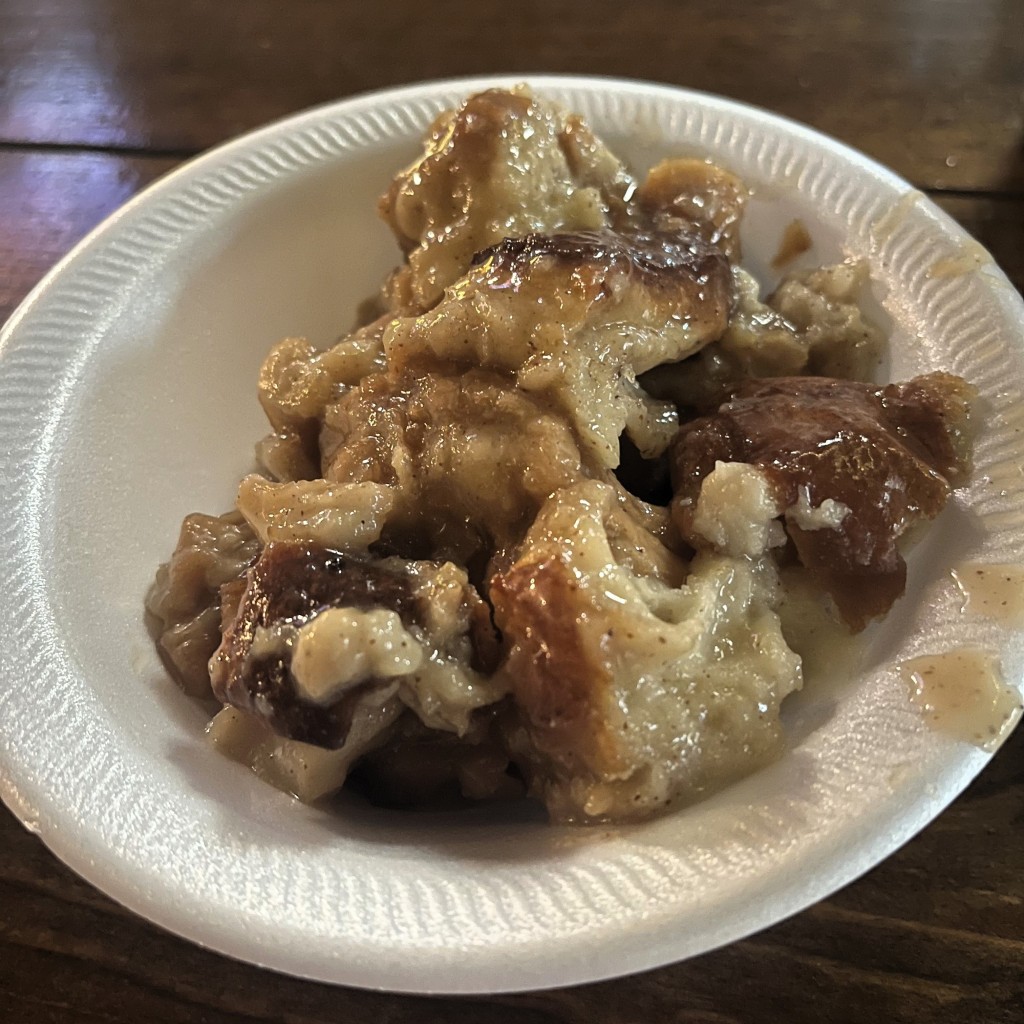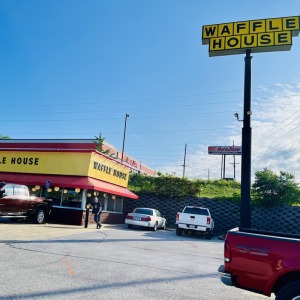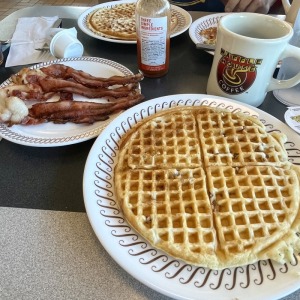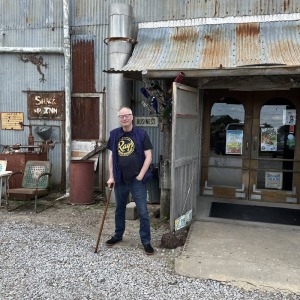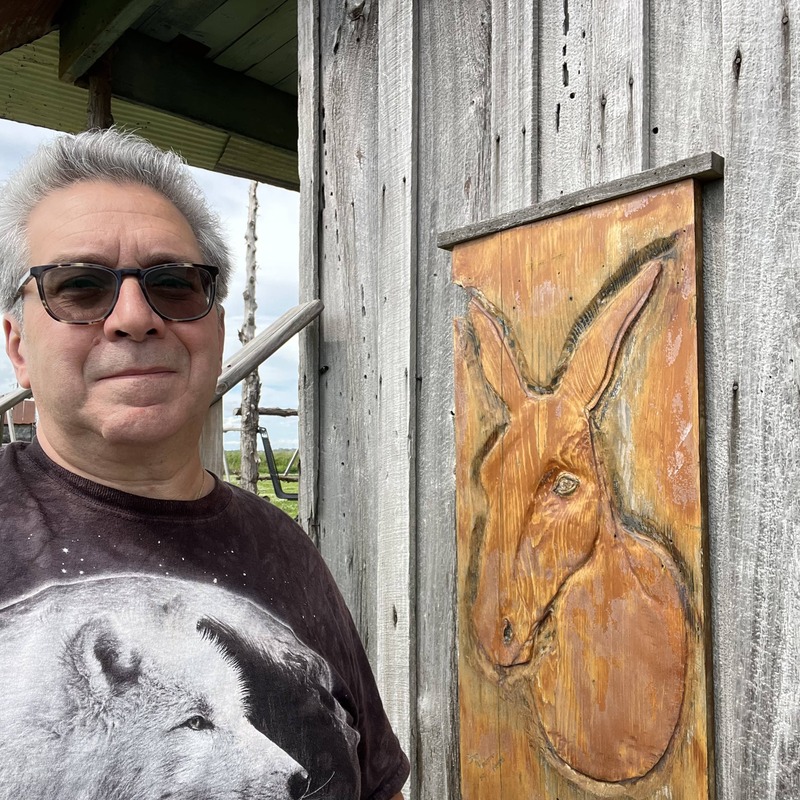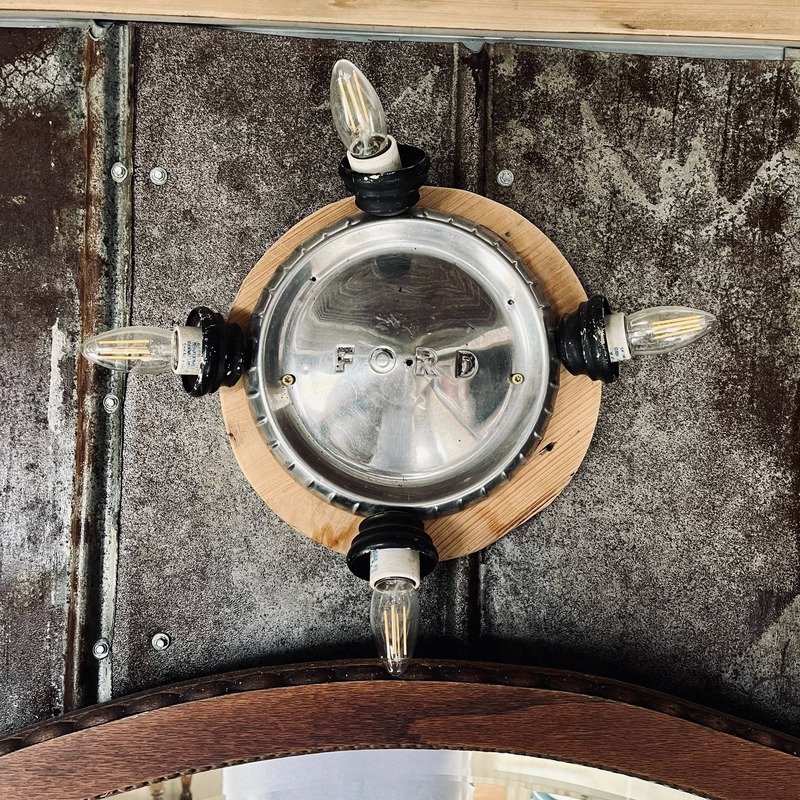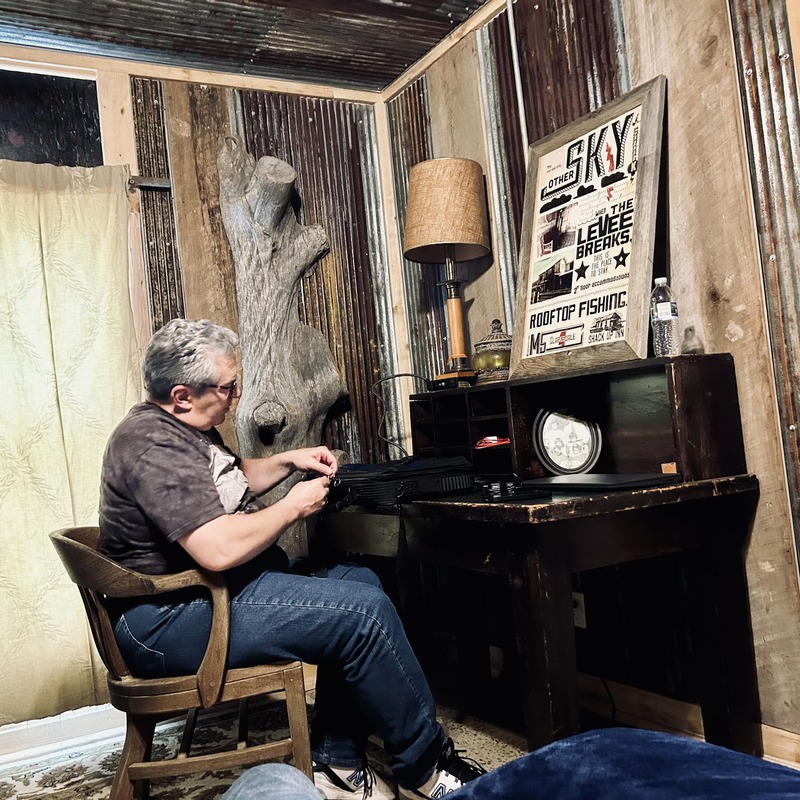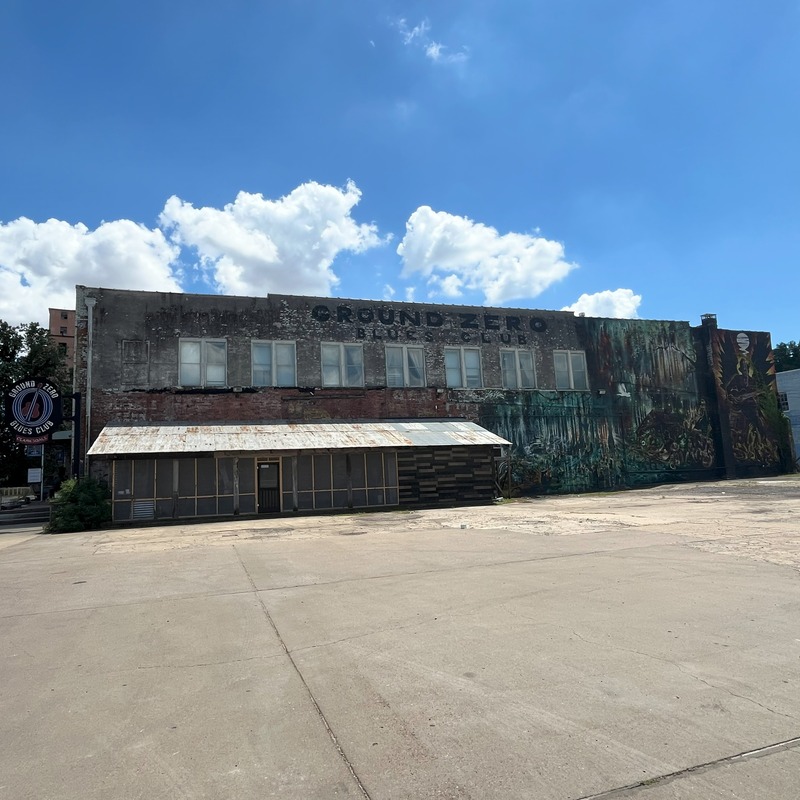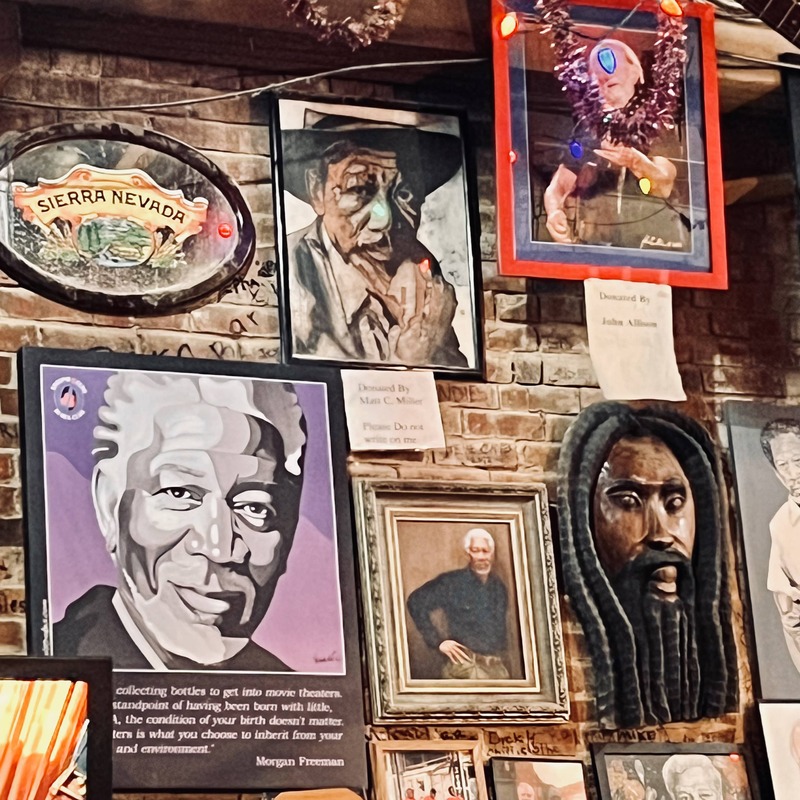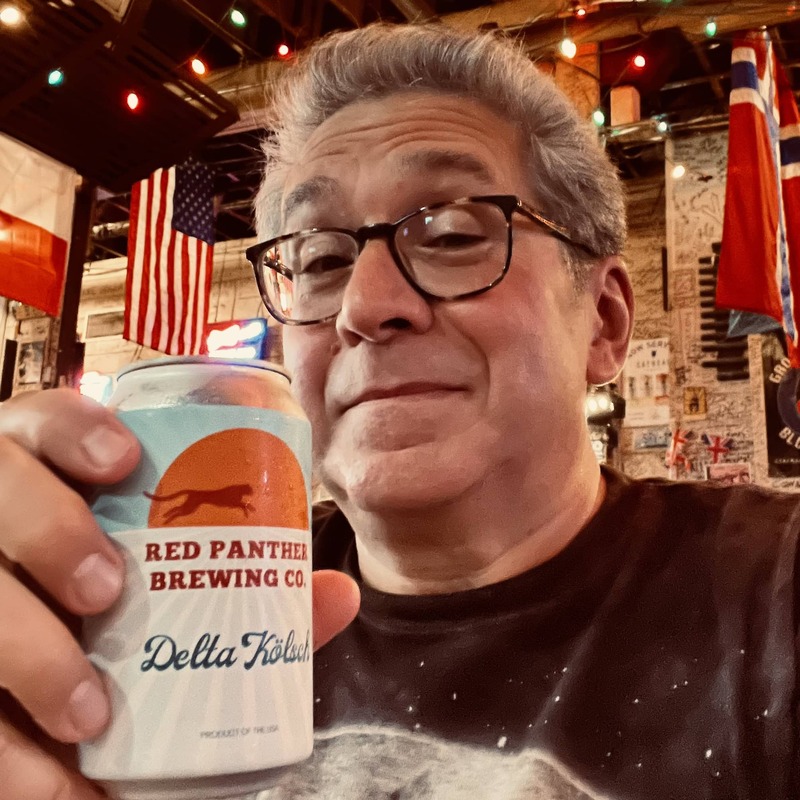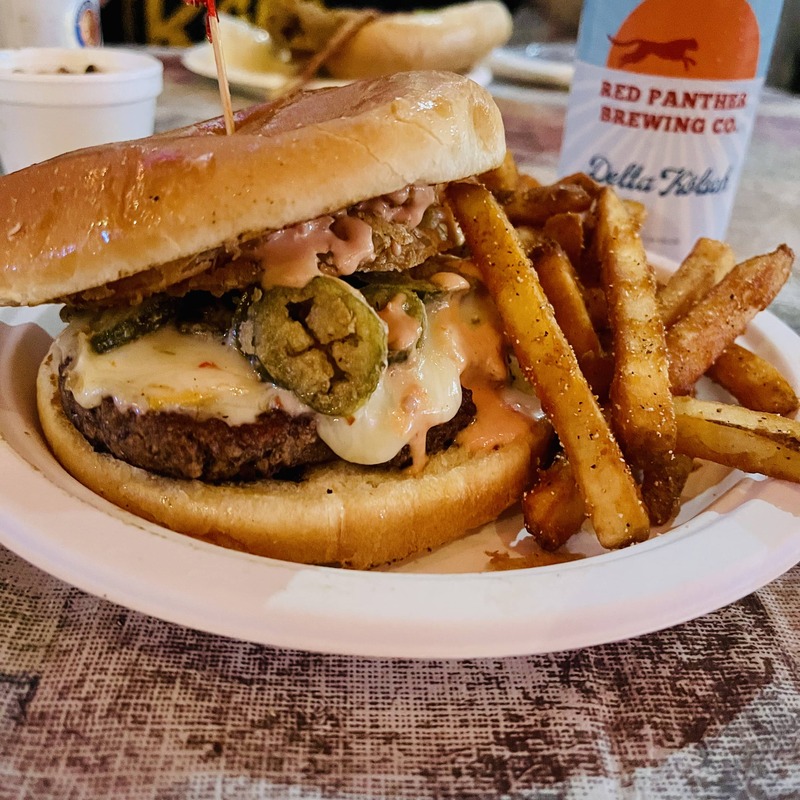
On Tuesday morning, it was time to leave Clarksdale and head up to Memphis, Tennessee. Built on a bluff just across the state line from Mississippi, Memphis is where the Mississippi Delta begins and has been called the capital of the Delta by some. The Blues Highway, US 61, leads through the Mississippi Delta country to Memphis and many delta blues musicians traveled north to and through this gateway city. Both rock and roll and soul music were born there. And coincidentally, my family and I first traveled to Memphis over 20 years ago at the invitation of my friend Matt to meet up with him and and his family to tour the city and spend some quality time together.

We left the Shack Up Inn and headed up Highway 61, stopping for breakfast at a Waffle House near Tunica, which is popular for its casinos. Matt and I don’t gamble, but as you may have noticed, we do eat. You already saw my standard Waffle House breakfast, so no food pic this time. Interestingly enough, though, this particular restaurant has a sizable water retention pond running beside the highway. Because of the pond’s elongated shape, at first glance, I thought it might be a creek. But upon closer examination, we determined that it was a pond and that it was inhabited by a fair number of turtles. Spoiled turtles. They were so used to being fed by well-meaning restaurant patrons, any time somebody would walk up to the pond’s edge, the turtles would all swim over expecting food. This was an amusing sight to see.
It probably took longer in the 19th century, but today one can drive from Clarksdale to Memphis in well under two hours. As we approached the metro area, we opted to skip the Interstate and stayed on US 61. This took a little longer and brought us through some vastly different areas of the city, which may be considered good or bad depending upon the eye of the beholder. Matt and I both appreciate the non-touristy side of this world and besides, we were in absolutely no hurry.
Despite having taken our time, we got into Memphis far too early to check into our hotel, so we opted to visit the Stax Museum of American Soul Music, a favorite for both of us. Even though Stax was forced into involuntary bankruptcy at the end of 1975, their legacy lives on. Booker T. & The MGs, the Staple Singers, Isaac Hayes, Sam and Dave, and Otis Redding, just to name a few, were all Stax recording artists. Thanks to the local community leaders who formed The Soulsville Foundation, the Stax Museum now stands on the former site of the Stax Records. And right next door, the Stax Music Academy and the Soulsville Charter School were also made possible by this same foundation. It’s a hell of a story.
Matt had proposed eating supper at Gus’s World Famous Hot and Spicy Fried Chicken in downtown Memphis, which was the chain’s first Memphis location and in fact only the second Gus’s location before it became a chain. Gus’s serves up southern spicy (not the same as Nashvillel hot) fried chicken, which is very flavorful but not painfully spicy. We opened with an appetizer of fried green tomatoes — my first time — which were quite tasty. Then Matt had a plate of fried chicken while I opted for their “limited time only” hot and spicy chicken sandwich, which is made with a boneless thigh, not a breast. Everything was quite good.
From there we walked to The Green Beetle, the oldest tavern in Memphis, located on the opposite side of the same block as Gus’s. This place had originally opened in 1939 as The Green Beetle Cafe and enjoyed some rather famous visitors before morphing into a dive bar and changing hands several times until rising to its current iteration, owned by the grandson of the Beetle’s original founder. It was okay, and reminded me of the college bars I used to frequent back in the day, though I think we had been expecting a bit more charm. Also, just a word to the wise, which way you walk around the block from Gus’s really matters. It’s almost upscale on one side of that block and sort of war-torn on the other.
The following day, after sleeping in a bit, we enjoyed lunch at a favorite spot that Matt had introduced me to a couple of decades ago: The Four Way Soul Food Restaurant, the oldest of its kind in Memphis. Although The Four Way was frequented by the likes of Elvis Presley and Dr. Martin Luther King, it’s not exactly a tourist destination. What it is, though, is a phenomenal soul food restaurant with a longstanding reputation as a gathering place where black and white diners can eat together — not a common thing for the place and time this restaurant was established (1946) and the years that followed.
I have never had a bad meal at this place. Matt had the chicken fried steak, black eyed peas, and pickled green tomatoes. I had a fork-tender, smothered pork chop, black eyed peas, and turnip greens. Both of us finished off with a delicious peach cobbler. Everything was wonderful, as always.
As an aside, I was sad to learn that the gentleman who had greeted me at the door so many years ago, Willie Bates, had passed away in 2017. I’ll never forget the way he greeted us and made us feel welcome, telling us the story of how he had bought The Four Way out of a desire to give back to the neighborhood. On my way out the door that first time, I walked over to tell him how much I had enjoyed eating there. I’ll swear, I thought the man was going to cry. That kind of thing sticks with me.
Next, we went over to The Blues Foundation’s Blues Hall of Fame Museum. Although the Hall of Fame has existed since 1980, this museum opened in 2015 and so, did not exist the last time I had been to Memphis. What a place! This museum was designed to provide an interactive and sensory experience. Besides all of the artwork, artifacts, displays, and recordings, for an additional charge, visitors can experience the museum’s interactive hologram exhibit featuring Taj Mahal. The Blues Hall of Fame is only the second museum in the United States to have utilized this technology. For about twenty minutes, Matt and I asked questions and this life-sized, three dimensional recording of Taj answered them. I’ll swear, he looked like he was gonna’ step out of that box any moment. But that was just the icing on the cake. The entire museum is great and well worth visiting.
For supper, Matt found us another hidden gem: Sam’s Deli of Memphis. Sam’s features a variety of Indian specialties but the menu overall can best be described as global. After opening with vegetable samosas an naan, Matt had this huge Italian salad and I enjoyed an equally huge sandwich called Mango Bonfire, made with Indo-Chinese chili chicken. The food was delicious and the portions more than generous. It’s best to come hungry to Sam’s!
We spent the final evening of our road trip on historic Beale Street, as it seemed fitting to do so. Beale Street had been a music hotspot long before it ever became a tourist attraction. Since the mid-1800’s, around the time of the Civil War, Beale was home to Black-owned businesses, clubs, restaurants, and shops. This is where the Delta musicians used to come up to play for Black audiences. Today the historic Beale Street district is considered the top tourist attraction in the state of Tennessee.
I had made only one request and that was to visit some clubs other than my favorite, the Rum Boogie Cafe. While I do love the Rum Boogie, it was the only club on Beale Street that I had been to thus far. So instead, we wandered into 152 Beale Street, which I believe was called “Club 152” once upon a time. Currently, this establishment seems to maintain absolutely no online presence. It’s a big place with two bars and seating throughout, including a row facing streetside. There was a band playing, a pretty good one, too, but not too many people were hanging out in there. I was not able to figure out the band’s name, but they deserved a bigger audience than they had. The bartender was pleasant enough, but again, not very busy. Matt and I listened to the band as we enjoyed our drinks, and then moved on.
We briefly — and I do mean briefly — ducked into another establishment, whose name I cannot recall, and quickly discovered that (a) it was open mike night and (b) the doofus at the mike was really drunk, really getting into the song he was singing, and really, really devoid of any talent whatsoever. We walked out faster than we had walked in and headed over to B.B. King’s Blues Club, a super popular place. We paid our cover, got seated, and stayed for a while. The band, who seemed to specialize in R&B and rock and roll covers, was extraordinarily polished. Although I had been hoping to hear more blues that night, I must admit they were quite good. The place was pretty full for a weeknight and the servers seemed to be working hard to keep up. On the bright side, my drinks were good and strong. It was a good way to finish the night.

Before leaving Memphis Thursday morning, we found our way to Brother Juniper’s, a delightful and truly local breakfast restaurant that is also highly supportive of its community. I gorged myself on a couple of huge blueberry pancakes with a side of thick-sliced bacon and a mug of steaming black coffee as I contemplated how I was going to lose all the extra weight I had surely put on over the course of the past week. As much as this trip had been about the music, it also proved to be a decadent excursion into southern cuisine — and I ain’t talking health food.
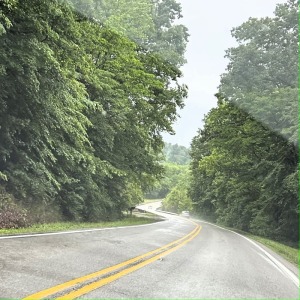
After we had both eaten our fill, we gassed up the car and headed north out of Memphis on Interstate 55. Within minutes, the skies opened up and let loose with a heavy thunderstorm and torrential rain. The storm eventually subsided, but that rain would follow us all the way to Illinois.
Once in Illinois, per Matt’s request, we took a planned detour to Tower Grove Cemetery in Murphysboro to pay our respects at the gravesite of Larry “Big Twist” Nolan. When we were younger, both Matt and I had been fans of Big Twist and the Mellow Fellows, a blues band that had become a top draw on the nightclub circuit in the 1970s and ’80s. The band played at Marquette University, where we had gone to college, every year that I was there, I think. It was still raining when we got out of the car and walked over to his gravestone. I had been there once before, so I knew exactly where to find it. We talked a little bit, took some photos, and then departed for home.

Unbeknownst to either of us, two days after we had made that stop, the Murphysboro Historical Society was to unveil a historical marker dedicated to Big Twist, who had lived in Murphysboro and raised his family there. We have already agreed that the next time we are in that area, we must return to Murphysboro to view the marker.
The drive back to Plainfield was a long one, but save for a brief scare when we kept smelling raw gasoline (not ours), it was uneventful. I was deeply touched when at one point I asked Matt what part of our journey he had enjoyed most and he pointed to me, submitting that it had been a long, long time since we had talked “like we used to.” That much was true. Once upon a time, it would not have been unusual for us to stay up into the night, spinning yarns, painting dreams, or solving the problems of the world. As we get older and take on the burdens that typically accompany adulthood, life sometimes distracts us from that which is most important. I will strive to remember this going forward.

Our journey concluded that Thursday night. Matt continued on to his home and I basked in the glow of it all as I began to unpack. We had ventured out in search of the blues and in that regard, we were successful. I can’t wait to do something like this again!
Well, this has been a long one, four installments worth. If you have been following along the entire time, I am grateful to you and, as always, I thank you for hanging with me.





